I mentioned in a previous post that Cartagena was beautiful and has a lot of history. Let’s explore a bit of that today, beginning with the beauty! I find beauty in flowers, trees, water, buildings, artwork, mountains, theater, science, clouds, athletics, the printed word, people, etc. I bet you do, too!
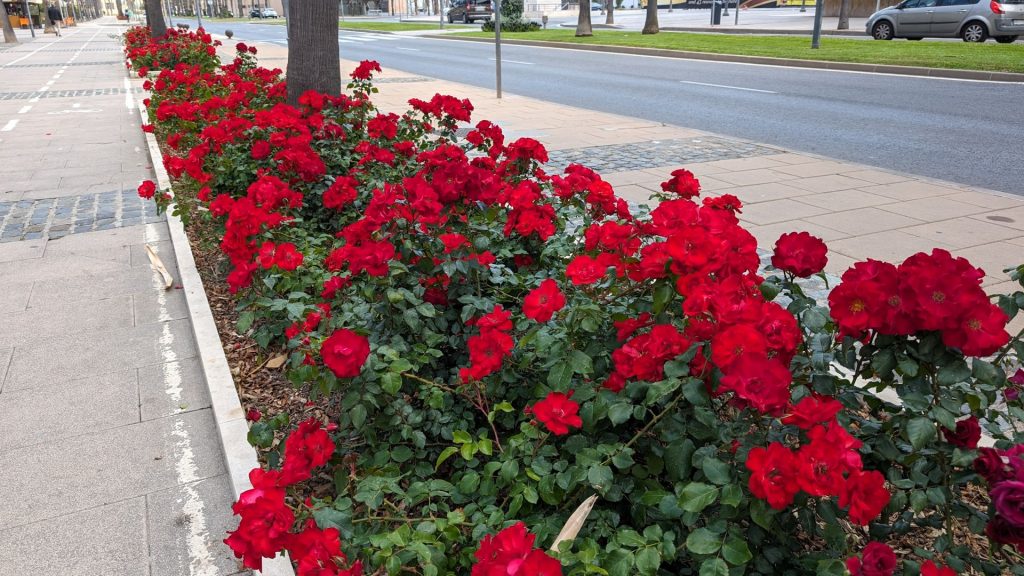
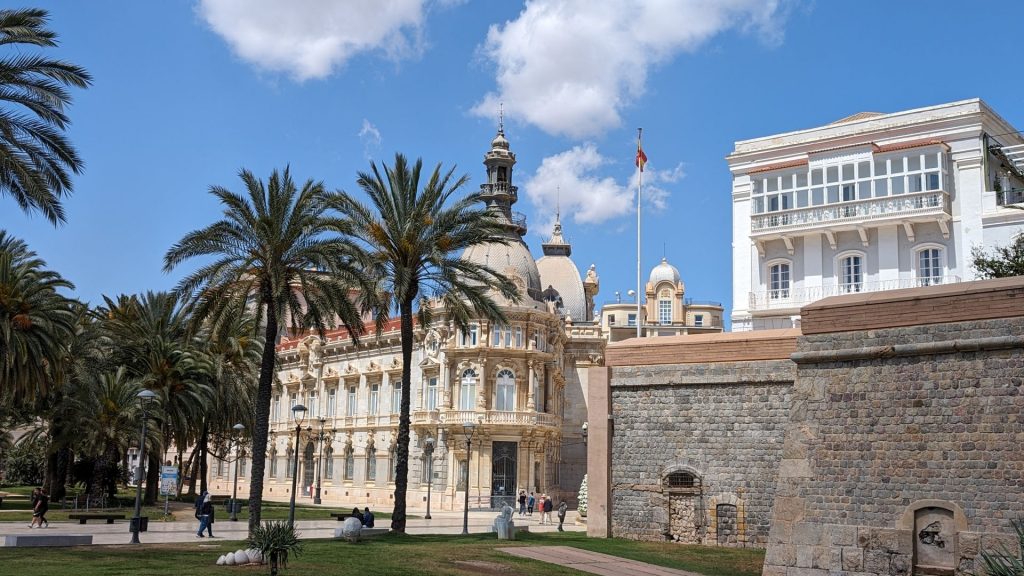
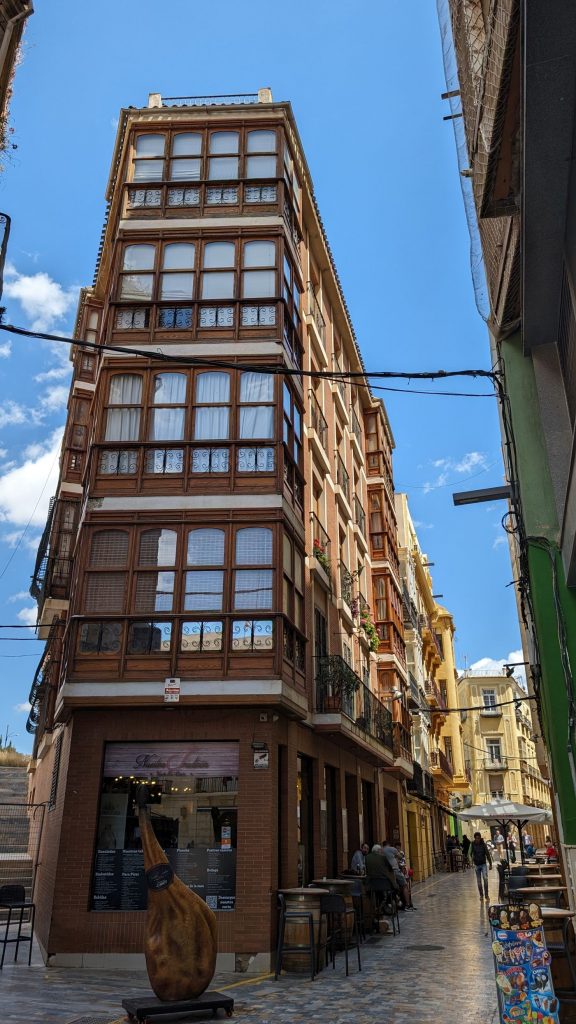
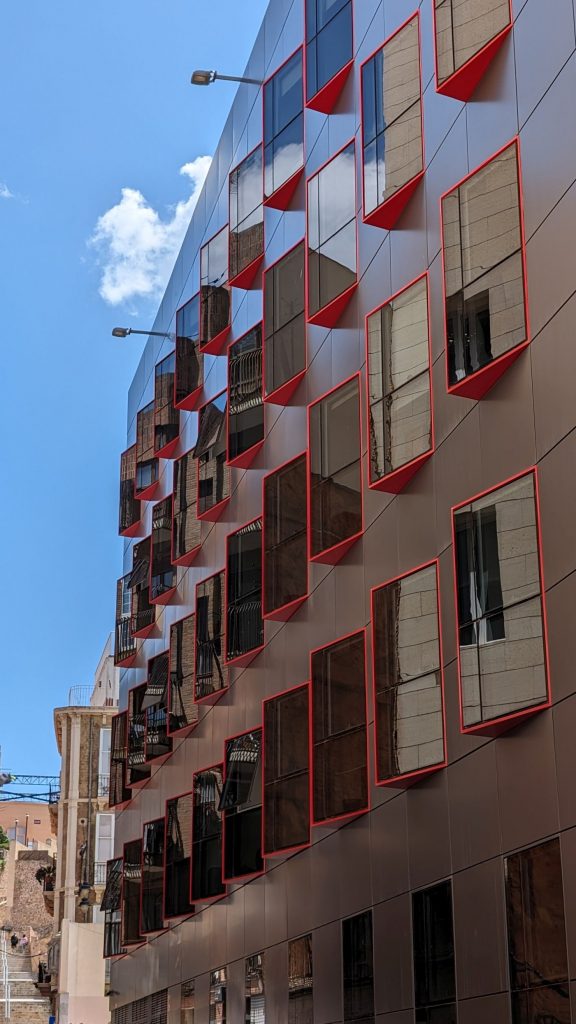
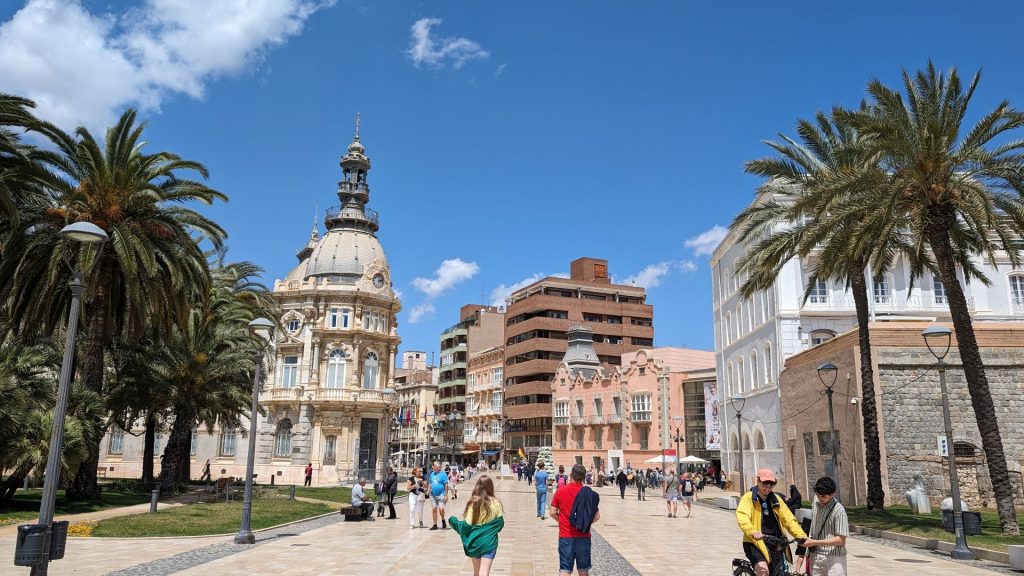
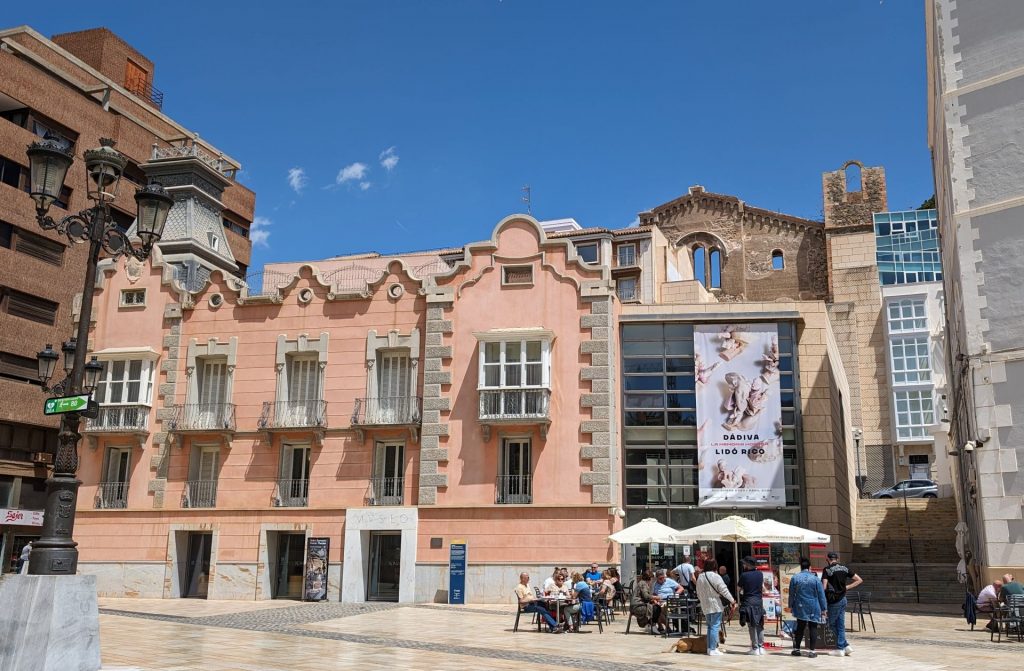
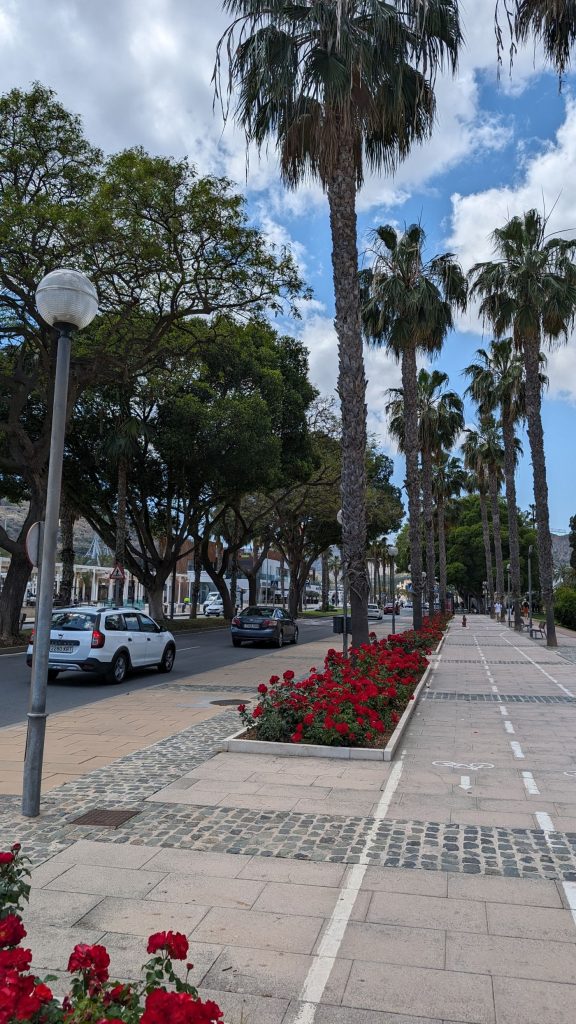
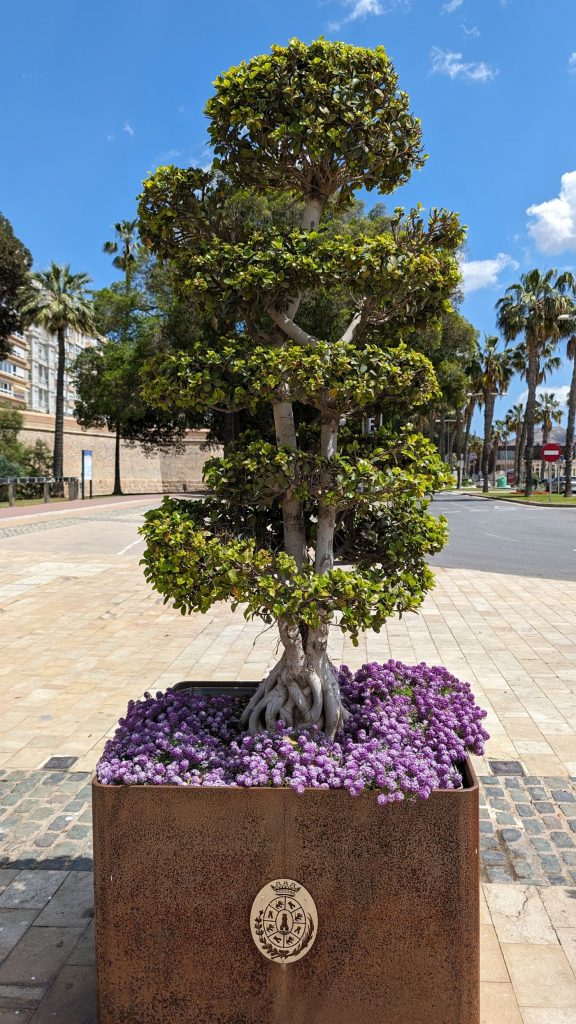
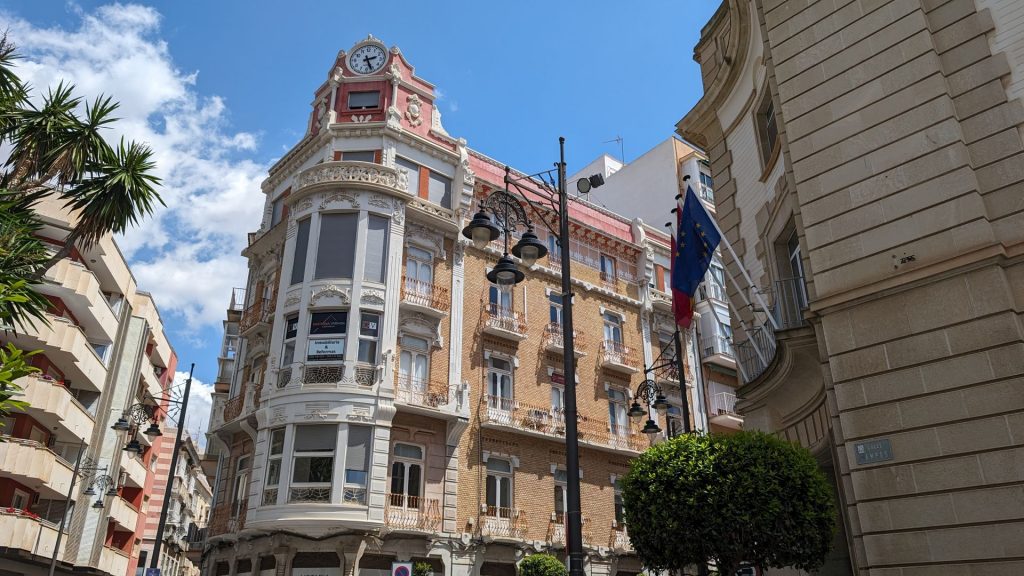
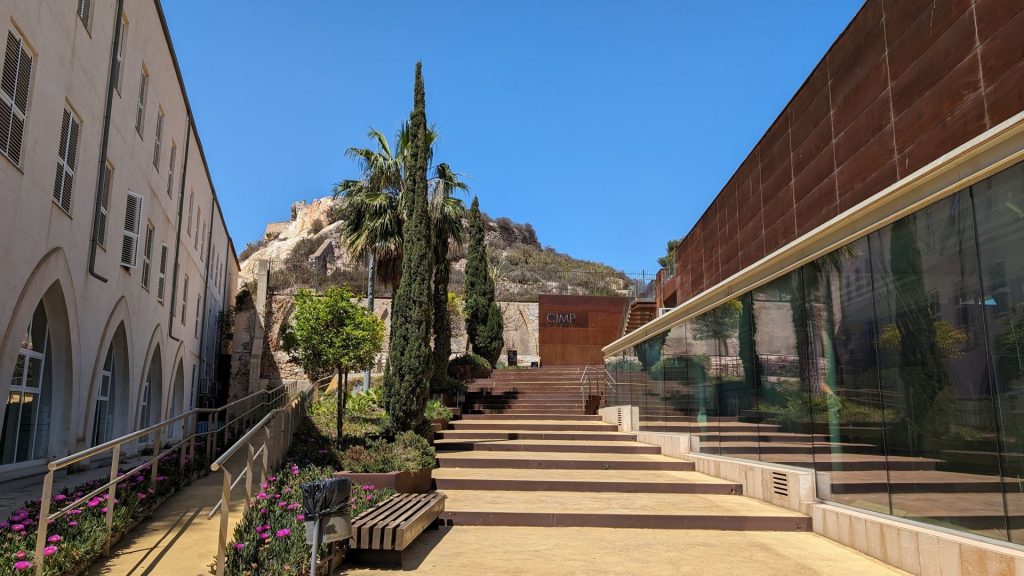
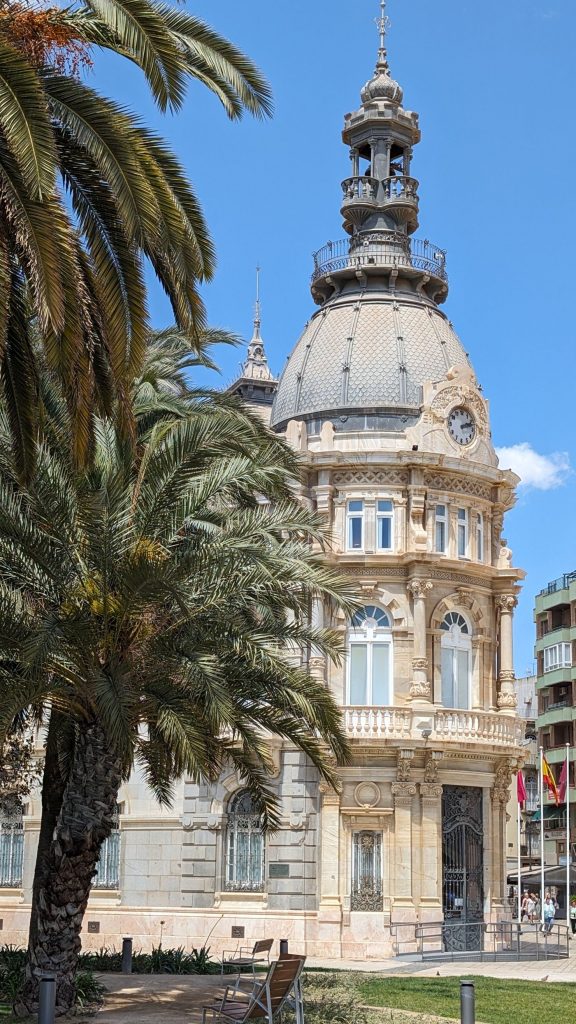
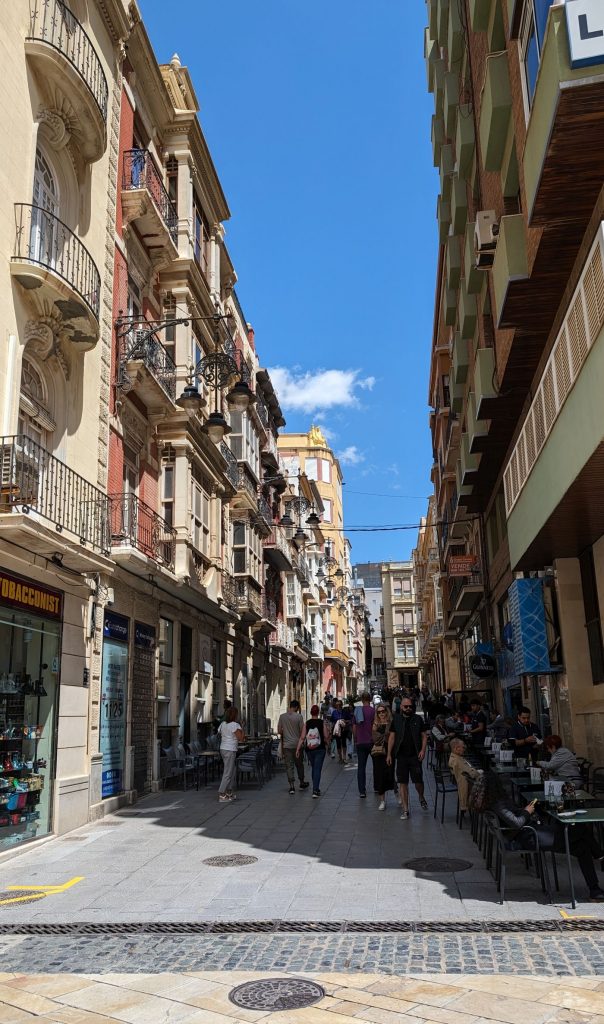
Now let’s look at some street art!
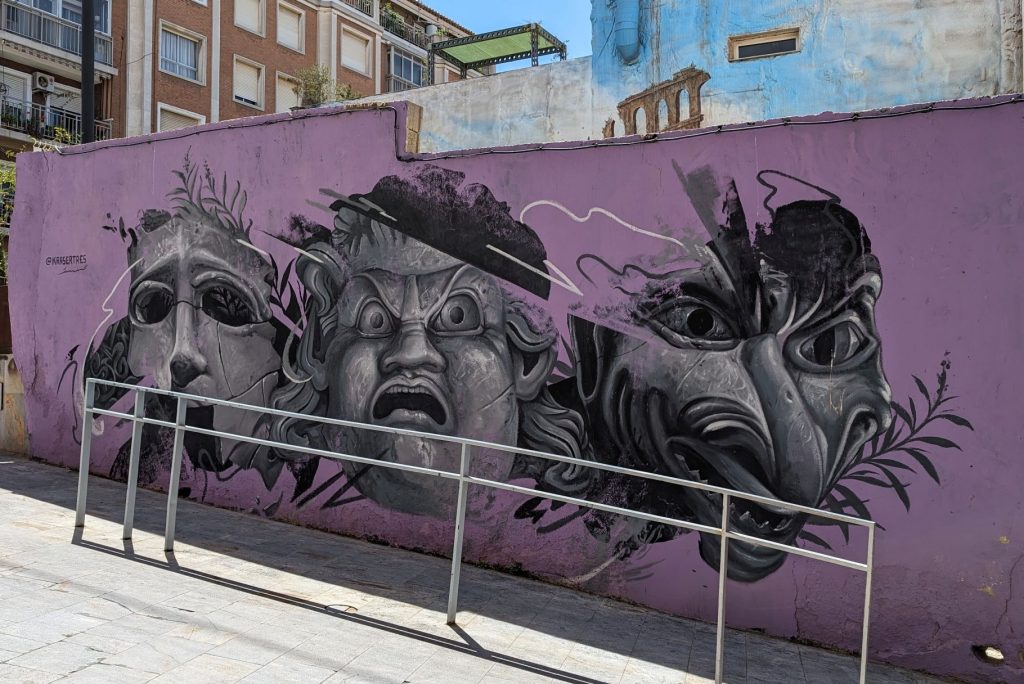
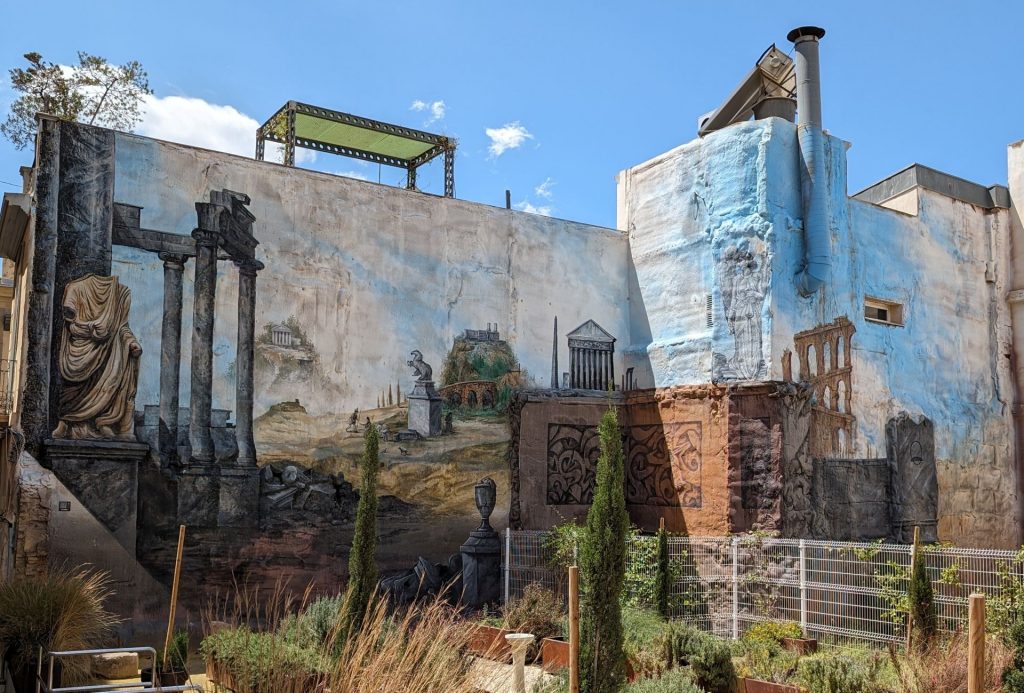
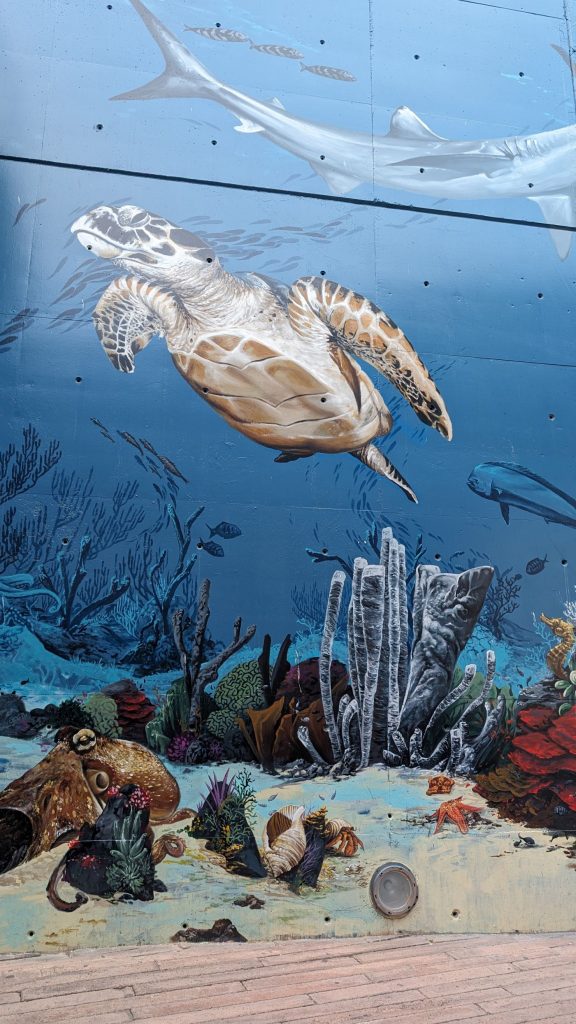
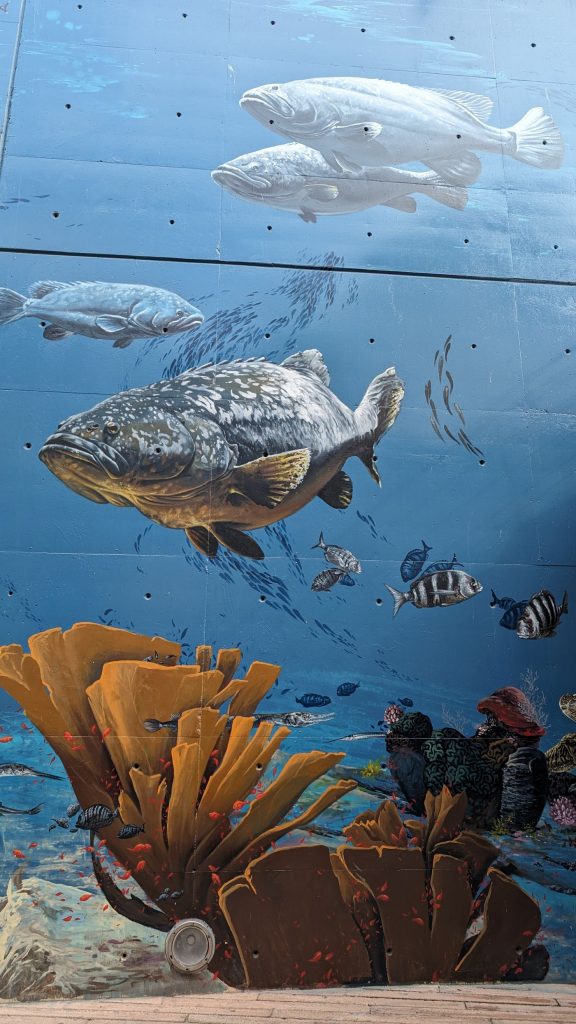
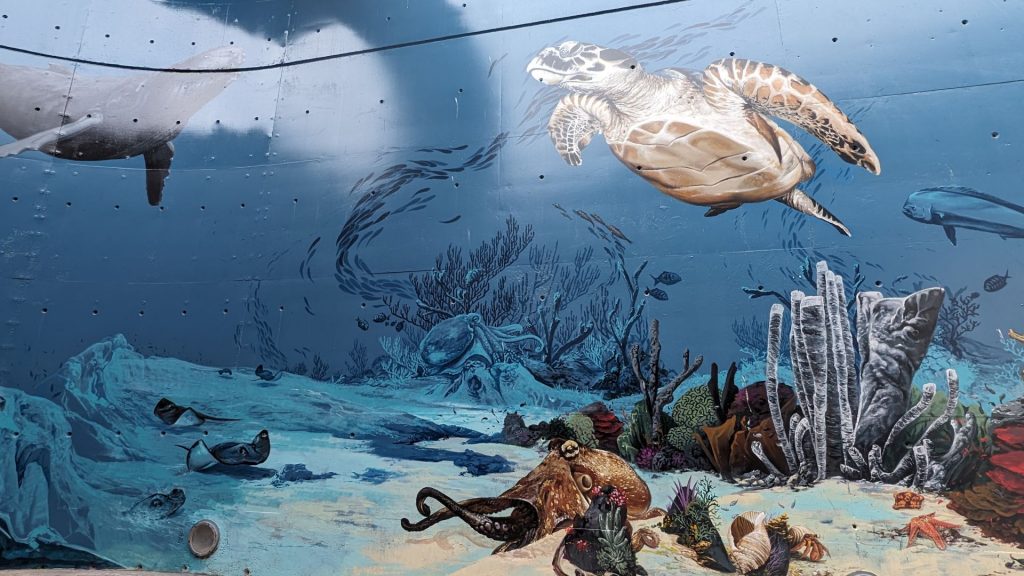
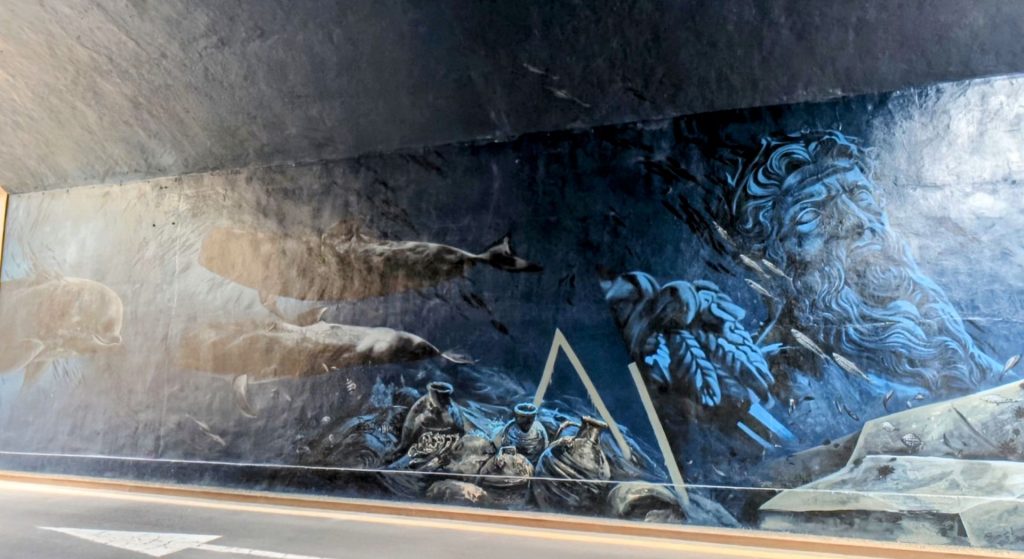
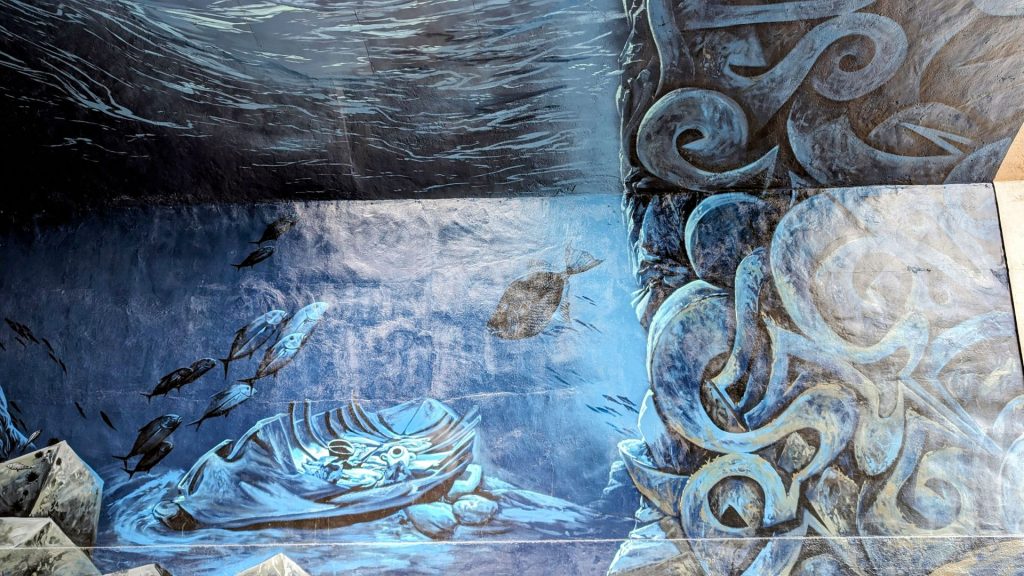
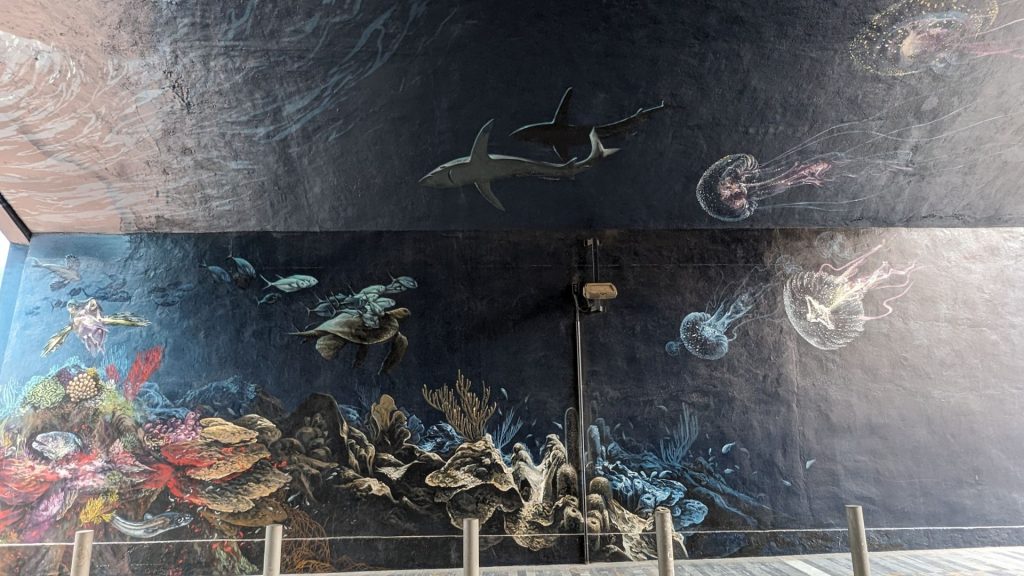
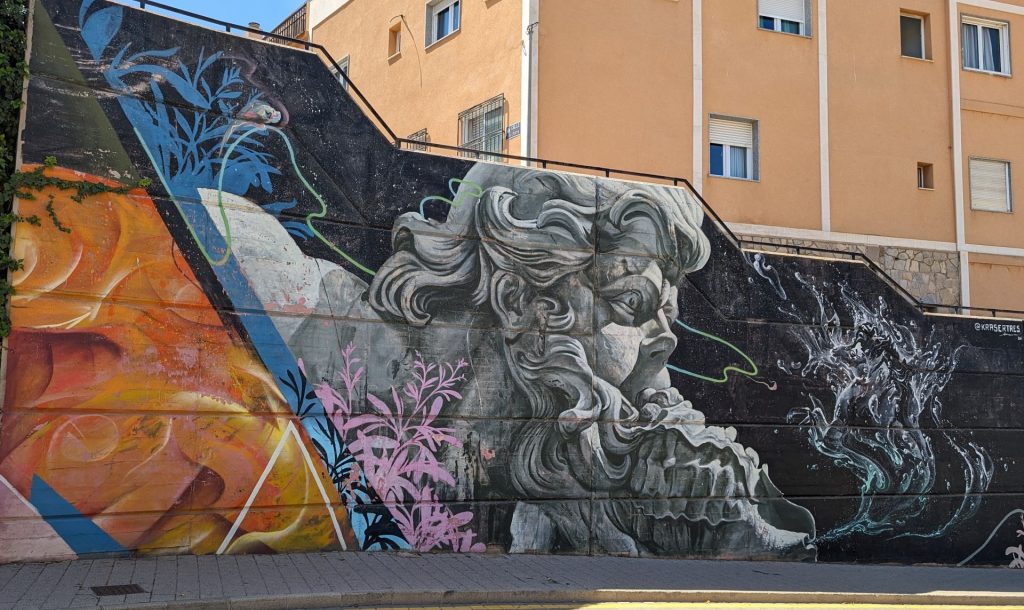
The next piece of artwork is not a “feel good” piece. The Zulo is a bronze sculpture by Victor Ochoa, created in tribute to the victims of terrorism. It is 4.8 meters in height and weighs two tons. It is a work that is truly soul shattering and makes you think about the anxiety and dread that thousands of people have felt due to the savage scourge of terrorism.
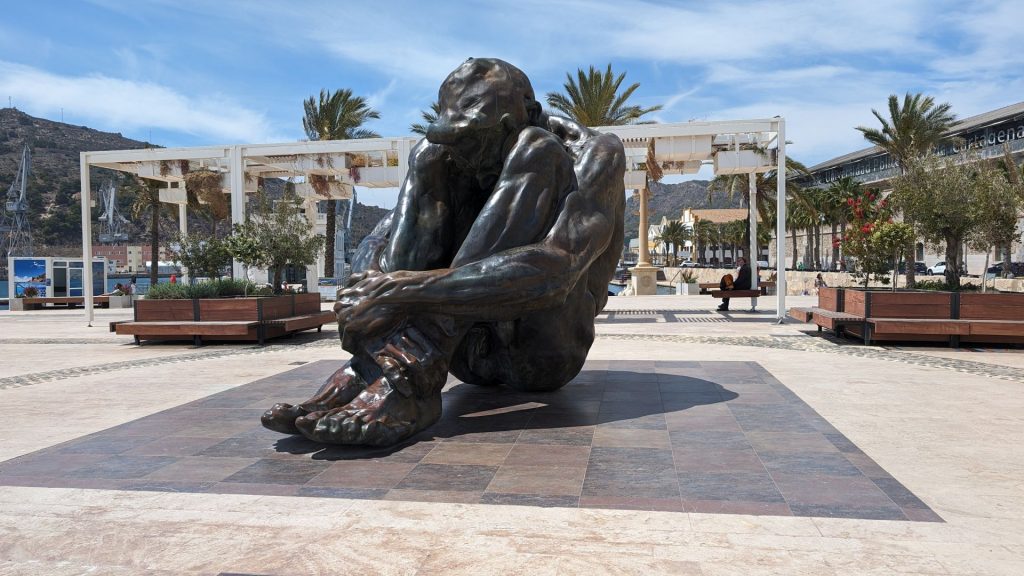
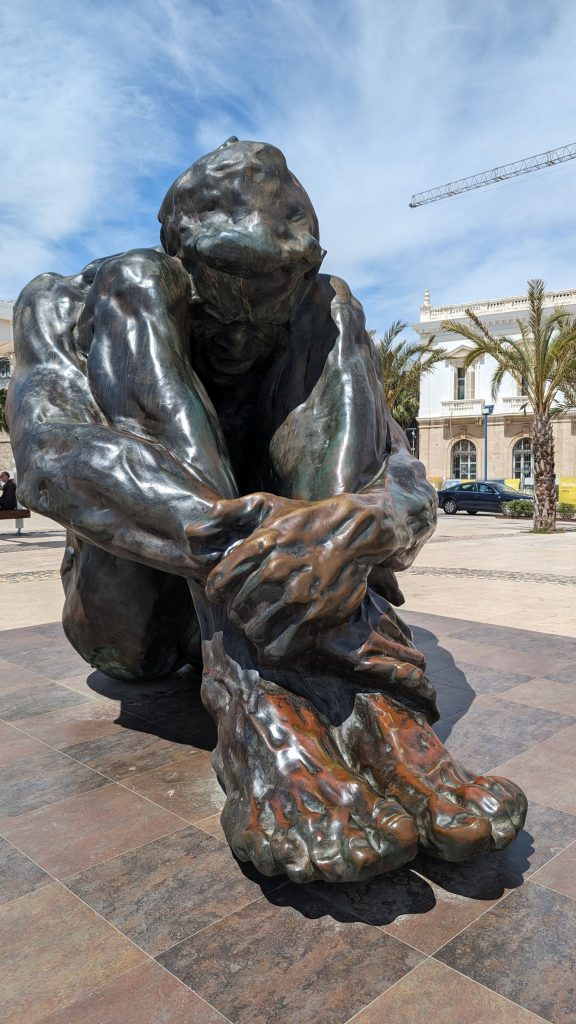
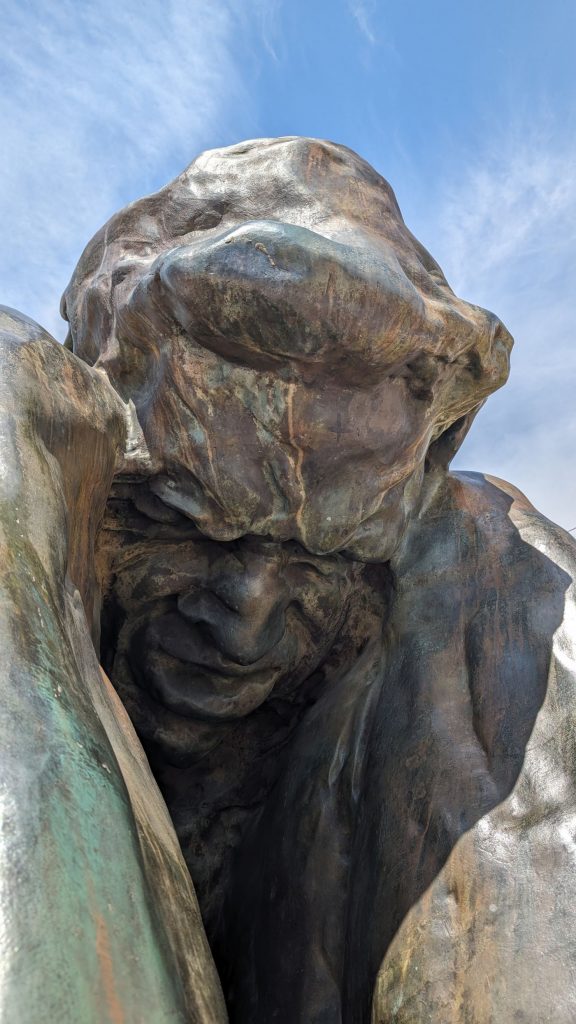
Time to change gears again.
Remember my “epic fail” day (yesterday) when everything I’d planned to see was closed and I couldn’t even get a good view of the ancient Roman Theater? Well, let’s talk about that theater and a few other interesting facts about Cartagena. First, Cartagena.
Cartagena has been inhabited for over two millennia, being founded around 227 B.C. by the Carthaginian military leader Hasdrubal the Fair as Qart Hadasht (meaning “New Town”), the same name as the original city of Carthage in North Africa (in what is now Tunisia). The city experienced its heyday during the Roman Empire, followed by occupation by the Visigoths, Vandals, Byzantines, and Arabs until it was conquered in 1245 by King Alfonso X.
Much of the historical significance of Cartagena stemmed from its coveted defensive port, one of the most important in the western Mediterranean. Cartagena has been the capital of the Spanish Navy’s Maritime Department of the Mediterranean since the arrival of the Spanish Bourbons in the 18th century. As far back as the 16th century it was one of the most important naval ports in Spain, together with Ferrol in the North. It is still an important naval seaport, the main military haven of Spain, and is home to a large naval shipyard.
The confluence of civilizations, its strategic harbor, and the influence of the local mining industry have led to a unique historic, architectural and artistic heritage. This heritage is reflected in a number of landmarks of Cartagena, including the Roman Theatre, an abundance of Phoenician, Roman, Byzantine and Moorish remains, and a plethora of Art Nouveau buildings from the early 20th century. Cartagena is now established as a major cruise ship destination in the Mediterranean and an emerging cultural focus. (We can confirm that, as we have seen many cruise ships come and go!)
Okay, that was short and sweet. My favorite part of the story is that there was someone who was actually called “Hasdrubal the Fair.”
The ancient Roman Theater was built between 5 and 1 B.C. In the 3rd century a market was built over the theater, reusing its materials, with a semicircular open space which followed the plan of the orchestra. The market was perhaps abandoned after a fire caused by the Vandals in 425. A market quarter of the Byzantines was established on the site in the 6th century.
During the 13th century the Old Cathedral of the city was built over the upper cavea. In 1988 the first remains of the theater were discovered during the construction of the Centro regional de artesanía (craft center). The archaeological excavations and the restorations were completed in 2003.
Speaking of the Roman Theater, I was able to get a great view of it from the castle, much better from the “view” I had from the ground (on my epic fail day):
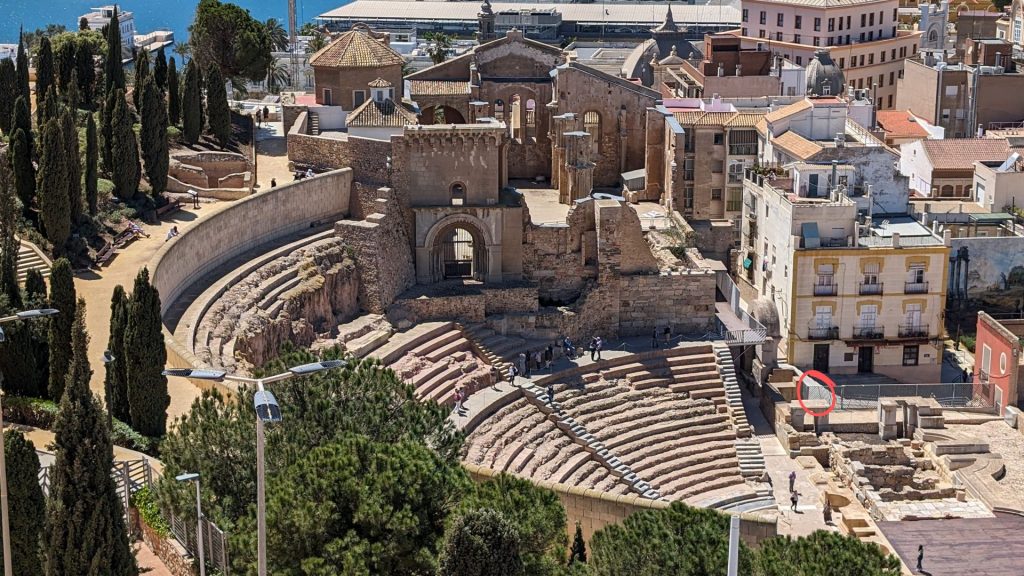
Wow, I just created a great segue to talk about the castle! Did you see how I did that? 🙂
I like this summary from Cartagena Puerto de Culturas, even though it is a bit of a repeat of some of what I’ve already shared. You can also learn more about the caste from that webpage.
“The fortress of the Castillo de la Concepción is the best starting point to discover the city and acquire an overview of its 3,000 years of history. Punic Carthage was founded in approximately 229 BC by the general Hasdrubal before its natural riches attracted the Romans, who made it one of the most important colonies of Hispania. The city was later ruled over by the Moors before its re-conquest for Castilla by the future King Alfonso X in 1245, and in the 18th century enjoyed a period of military splendour when it became the base of the Maritime Department of the Mediterranean. In the 19th century another golden age was brought about by industrialization and the growth of mercantile traffic in the port.
The location in which the visitor sets out on this journey through history is the Castillo de la Concepción. The castle stands on the hill of the same name, which in the past has been home to a Roman temple dedicated to Asclepius, a Moorish fortress, a medieval castle and the siren which warned the population of bombing raids during the Civil War. In addition, the best panoramic views of the city and its natural harbour are those afforded by the fortress, which is easily reached via the panoramic lift to save walking up the hill.”
Access is from sea level at the King Charles III rampart via a winding path through a landscaped park full of flowers, ponds, statues, and peacocks. The walk to and from the castle is a treat and the views from the castle and of the castle grounds are beautiful.
The bust of King Charles III is a work by José Torres Guardia. It was unveiled by King Juan Carlos I, on June 12th, 1990. The figure of Charles III was fundamental for Cartagena; he completed the defensive system of the port area with the construction of Muralla del Mar in 1766, the new King barracks, the Artillery Park and the Arsenal in 1782.
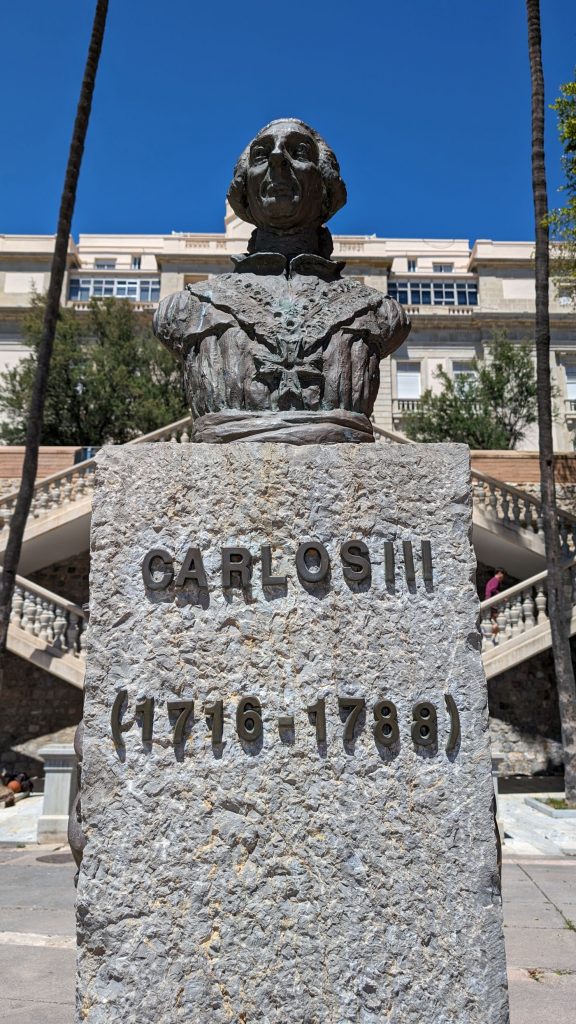
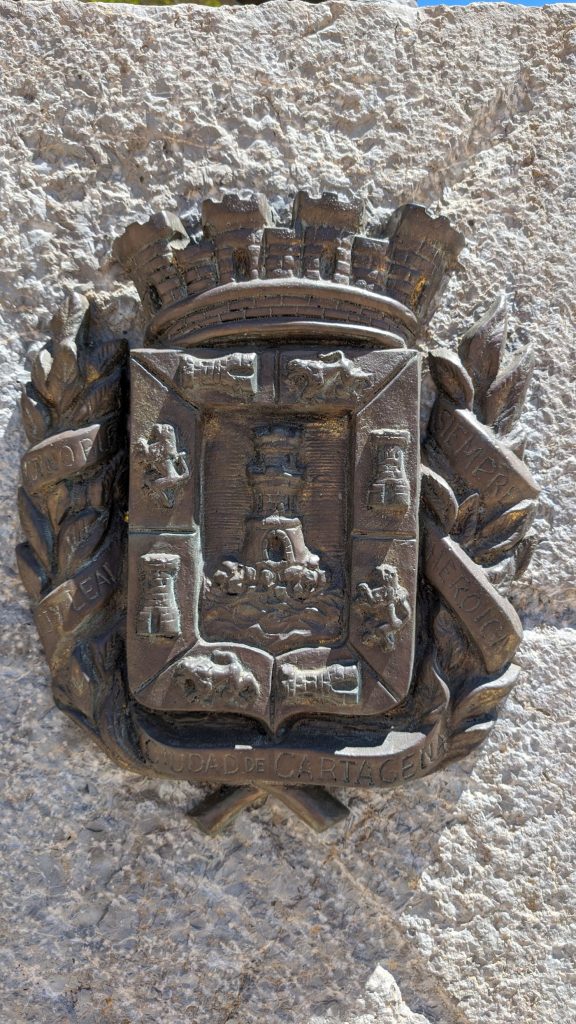
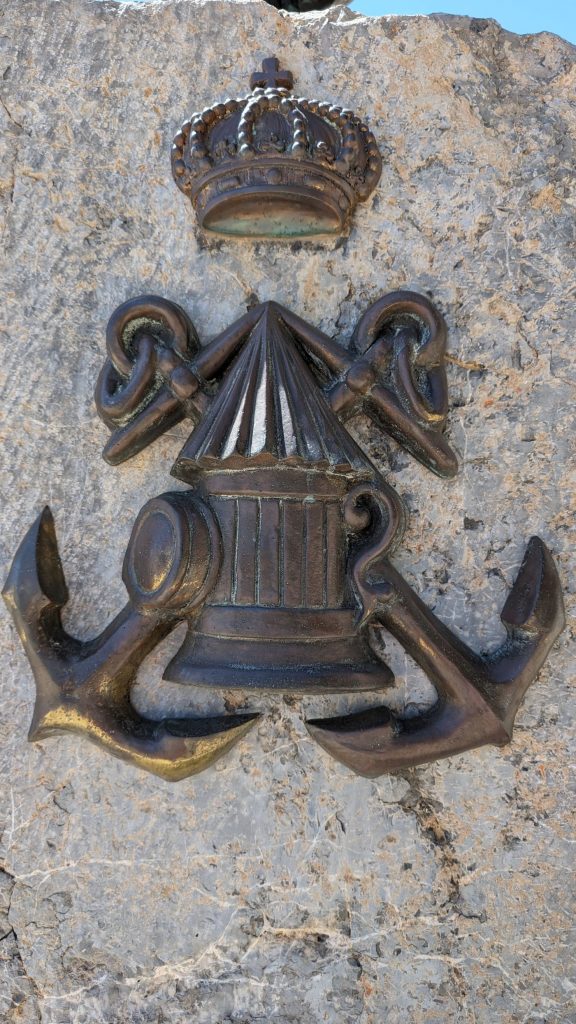
It is kind of hard to see what is “written” by the greenery below so I will tell you: “Parque Torres”:
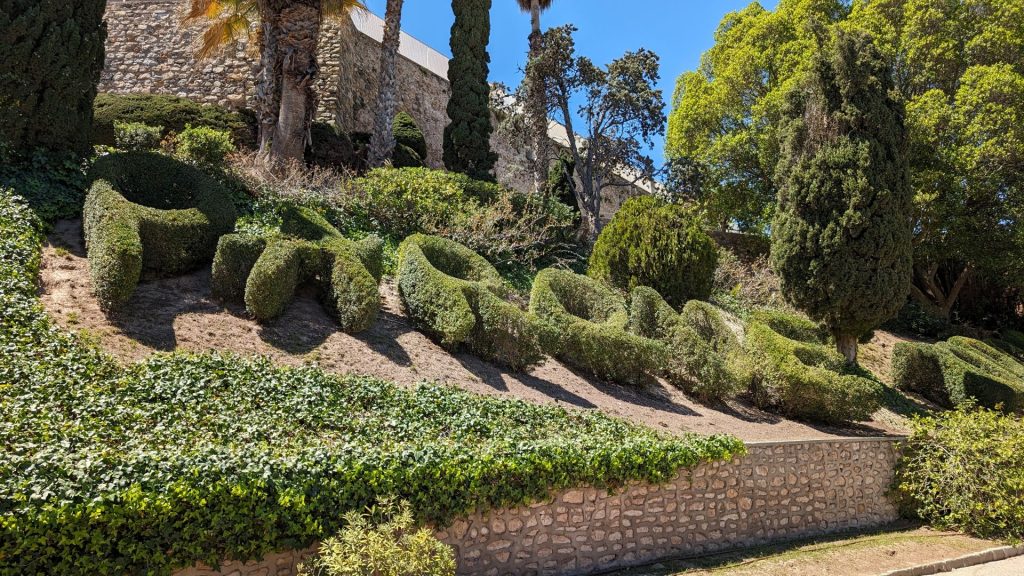
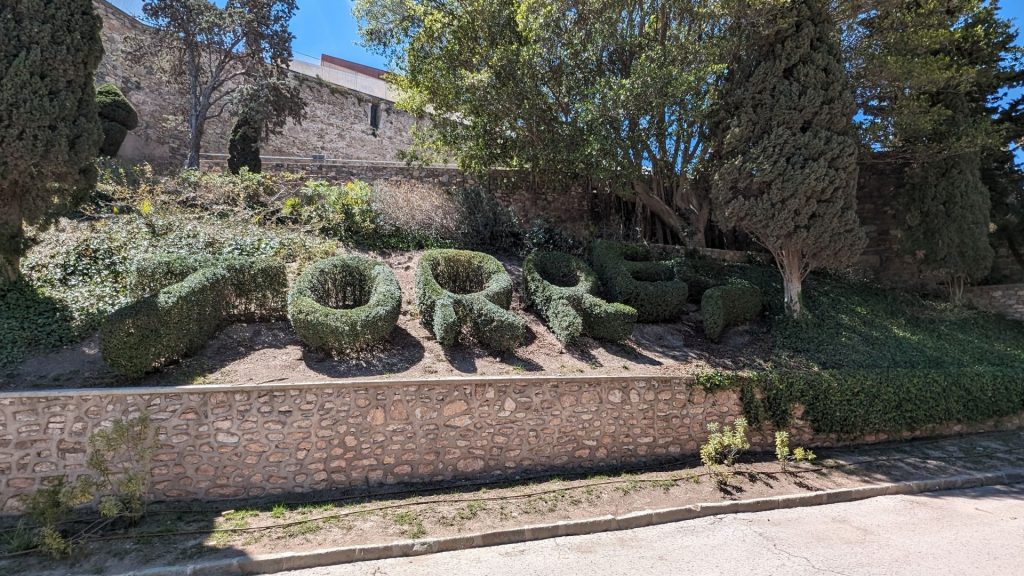
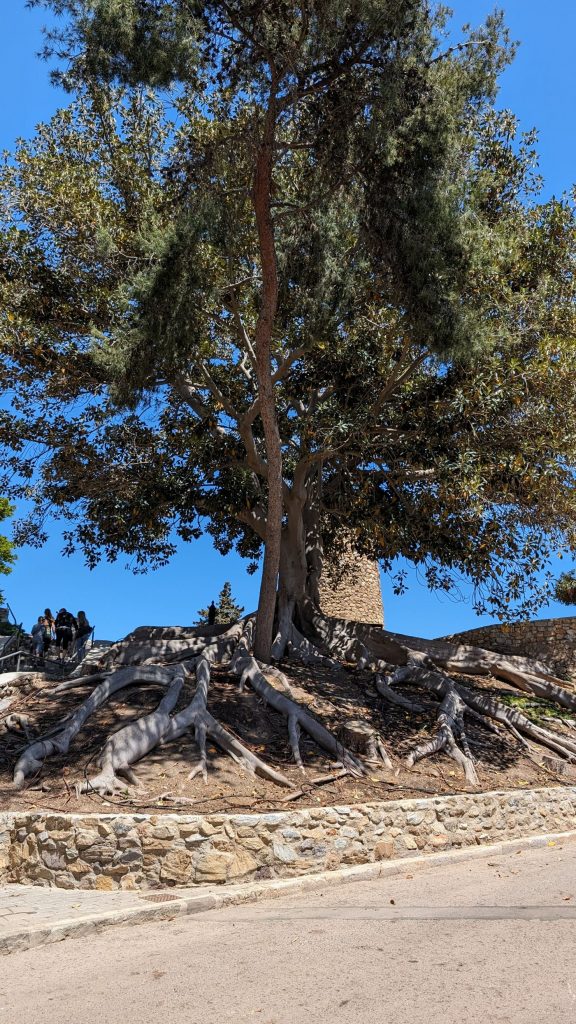
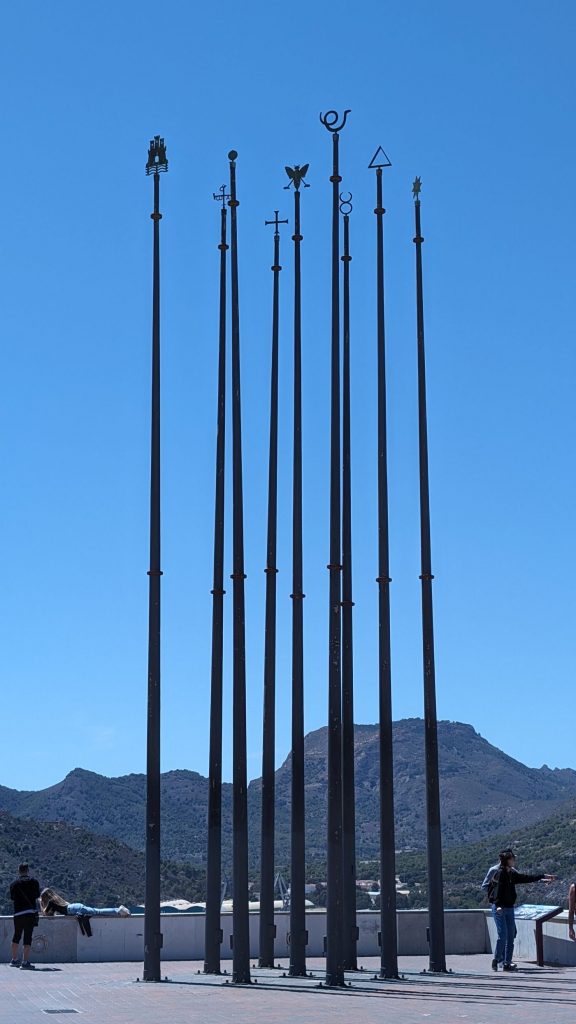
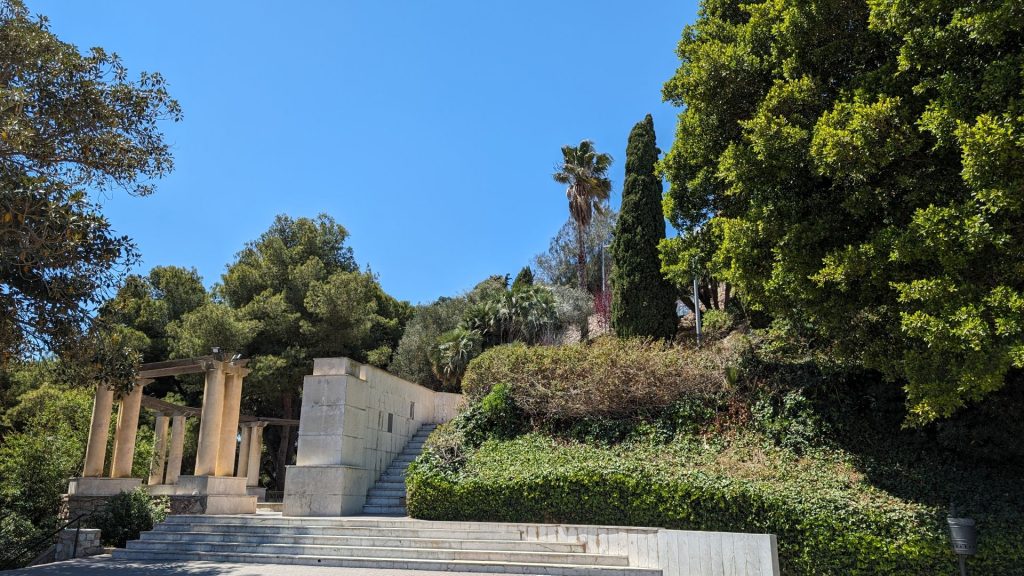
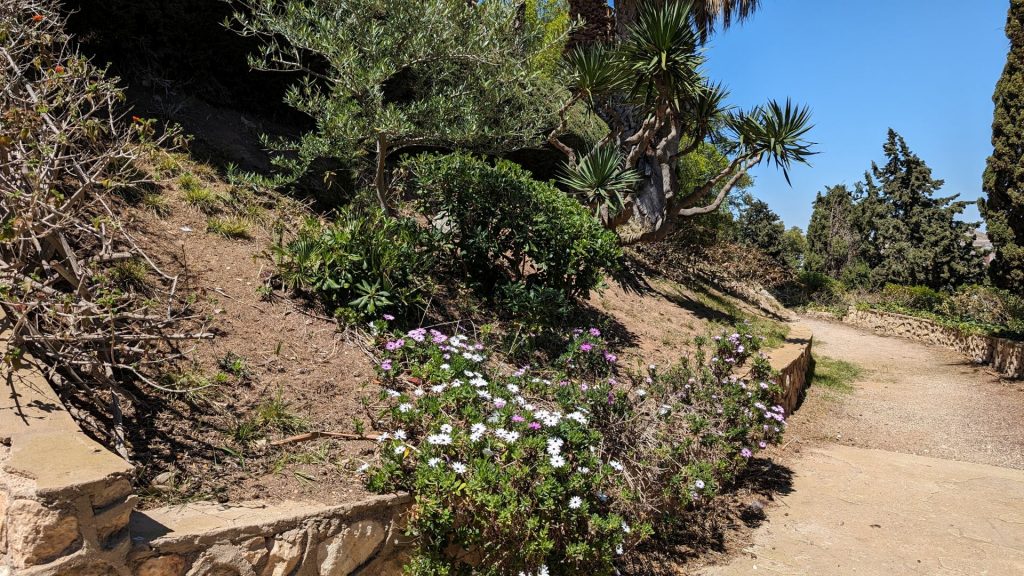
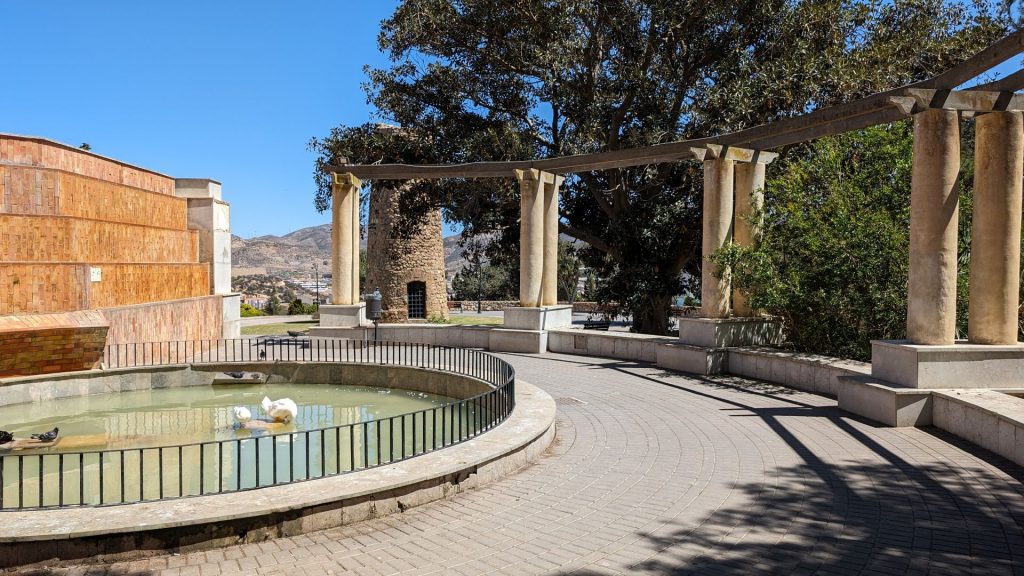
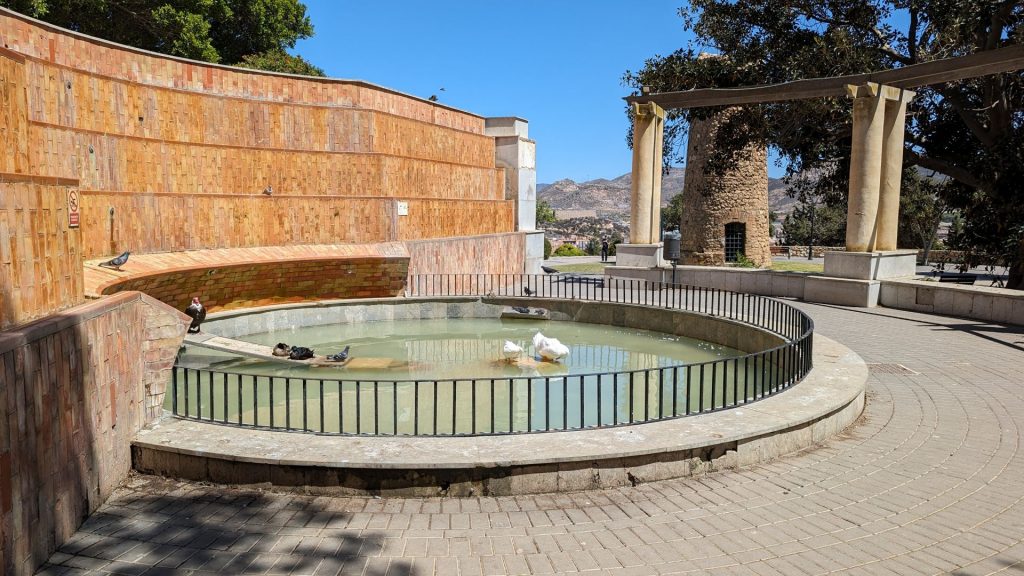
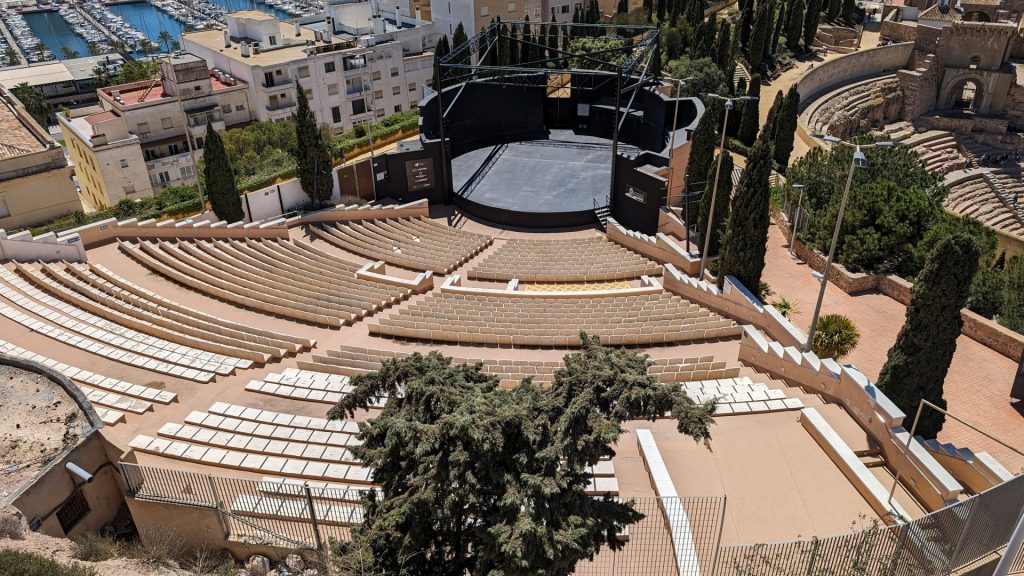
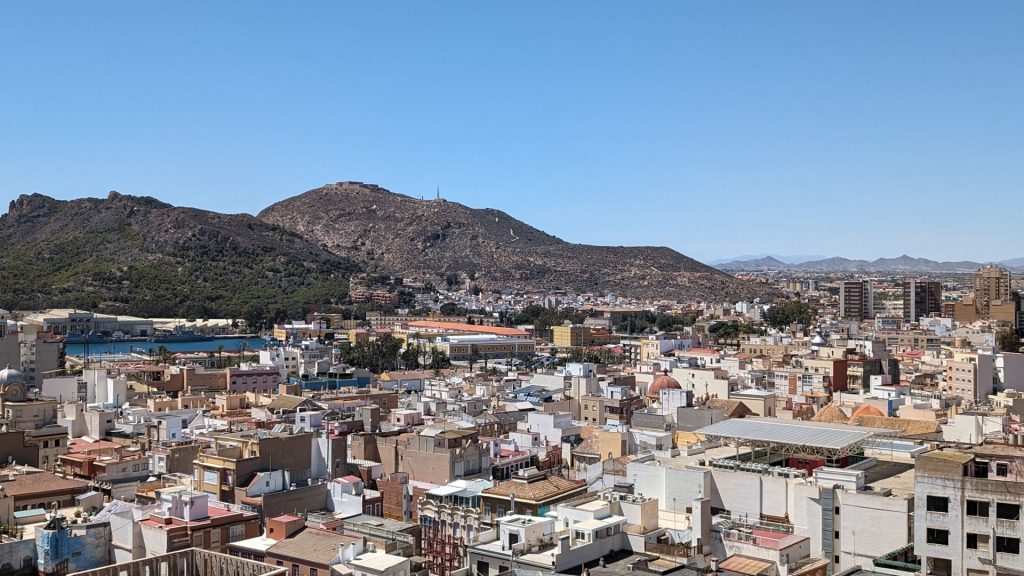
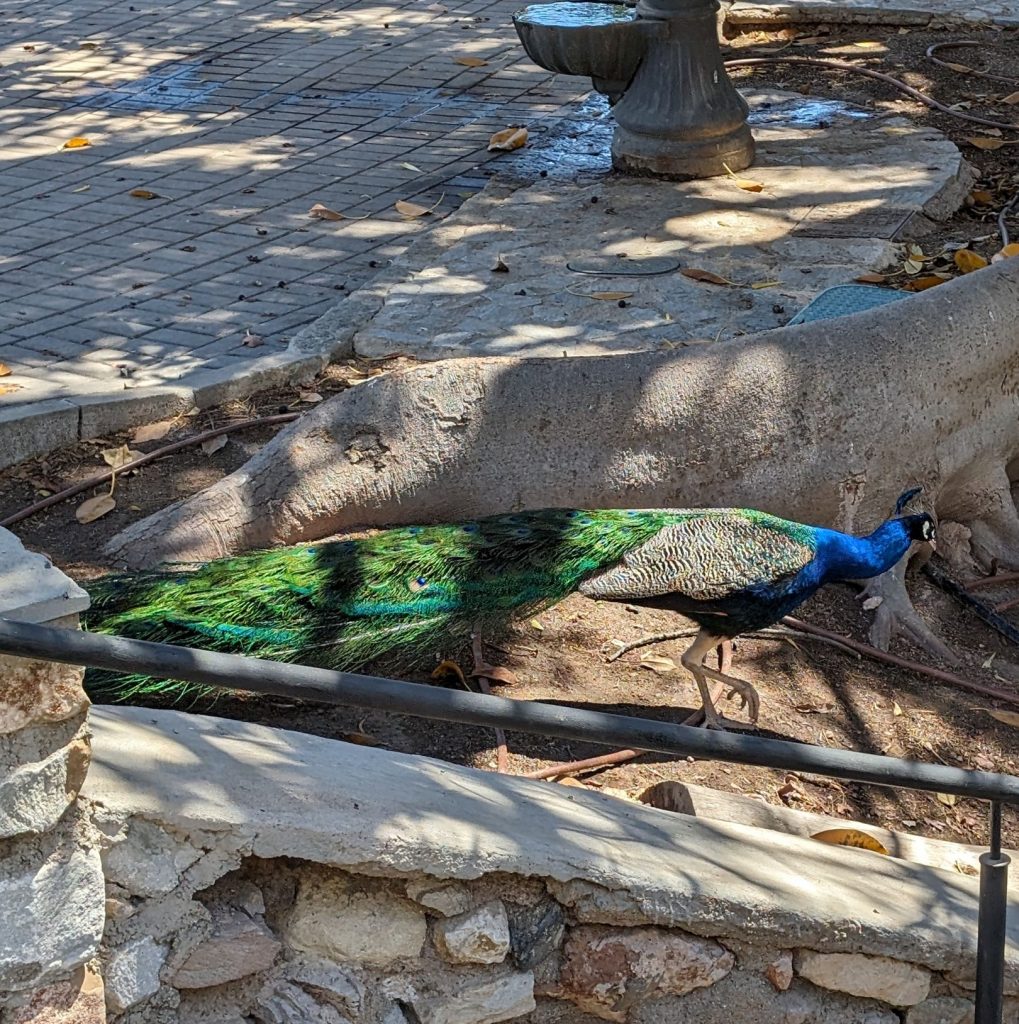
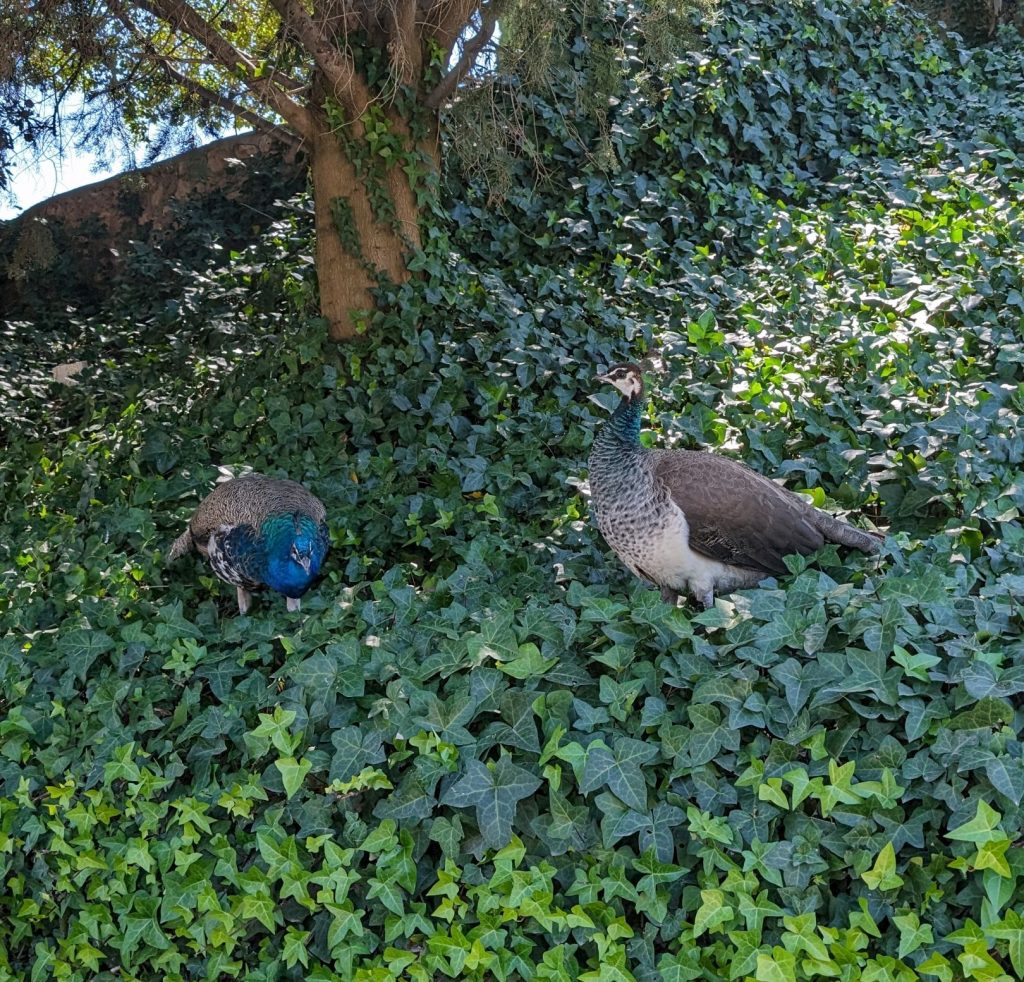
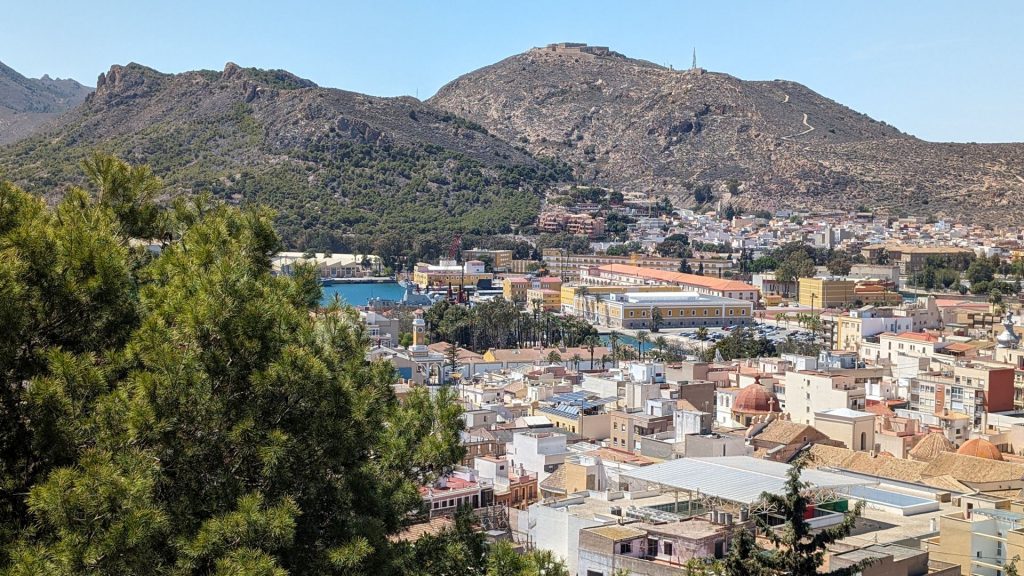
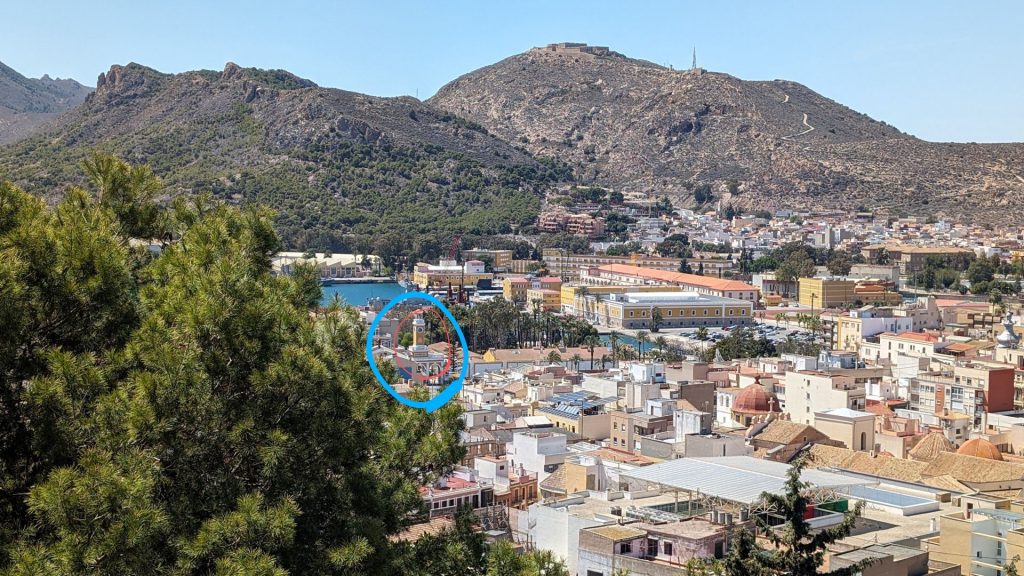
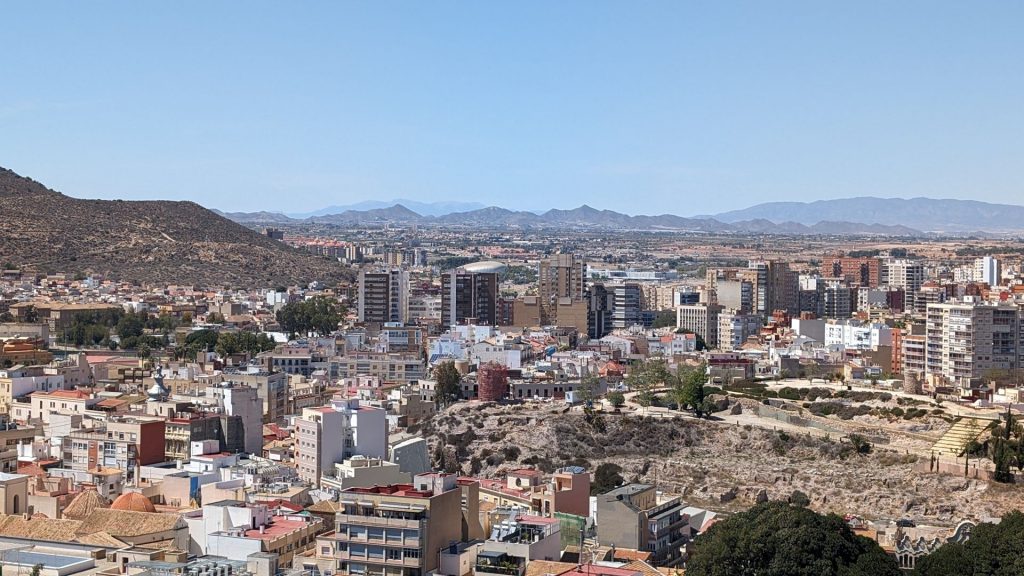
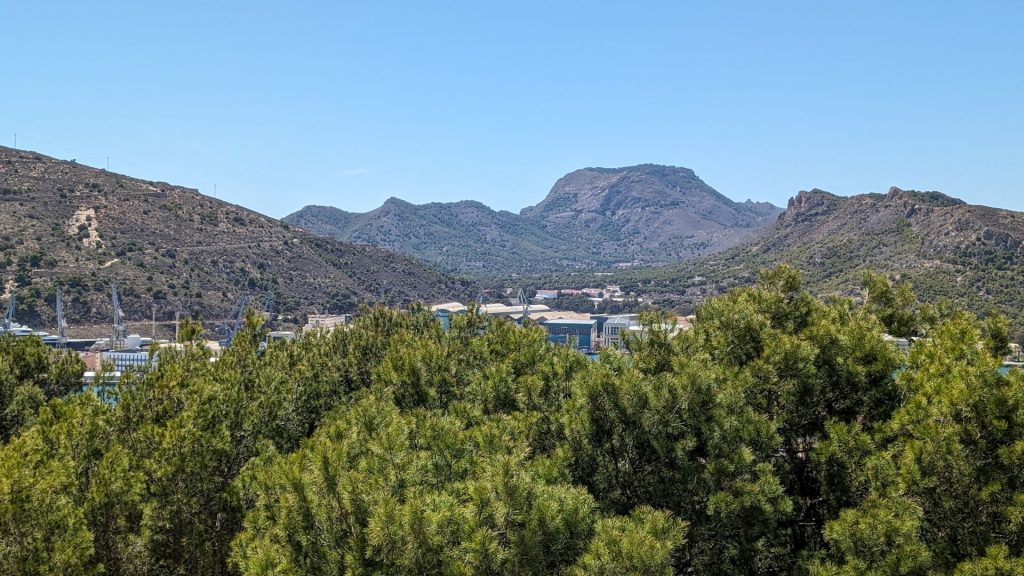
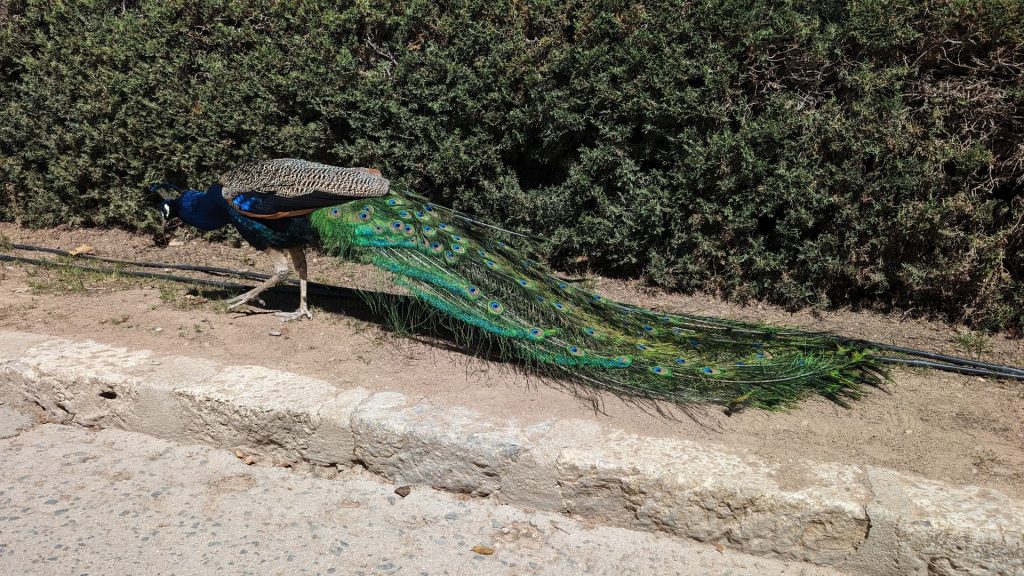
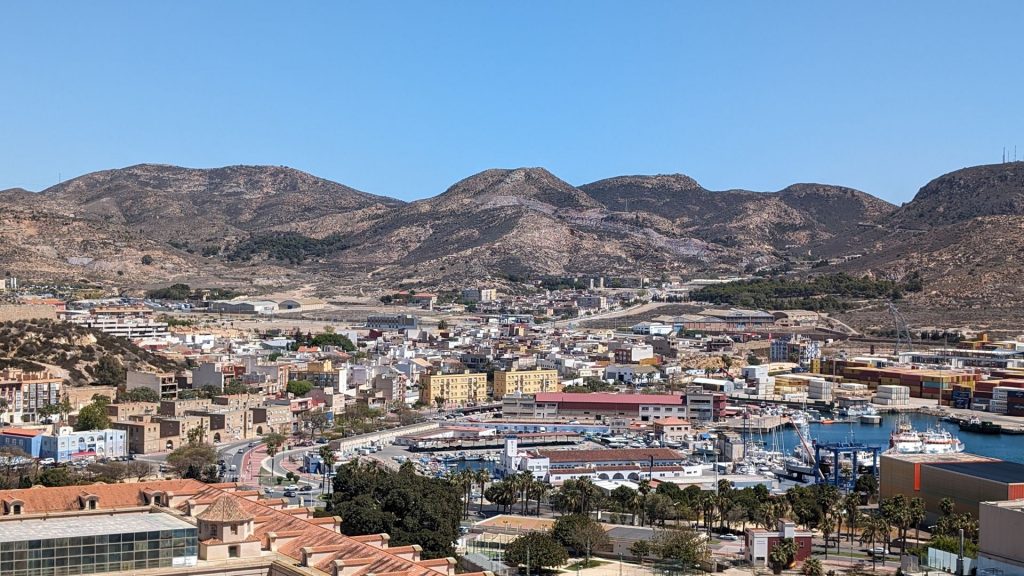
Here are some more pictures of Cartagena from ground level.
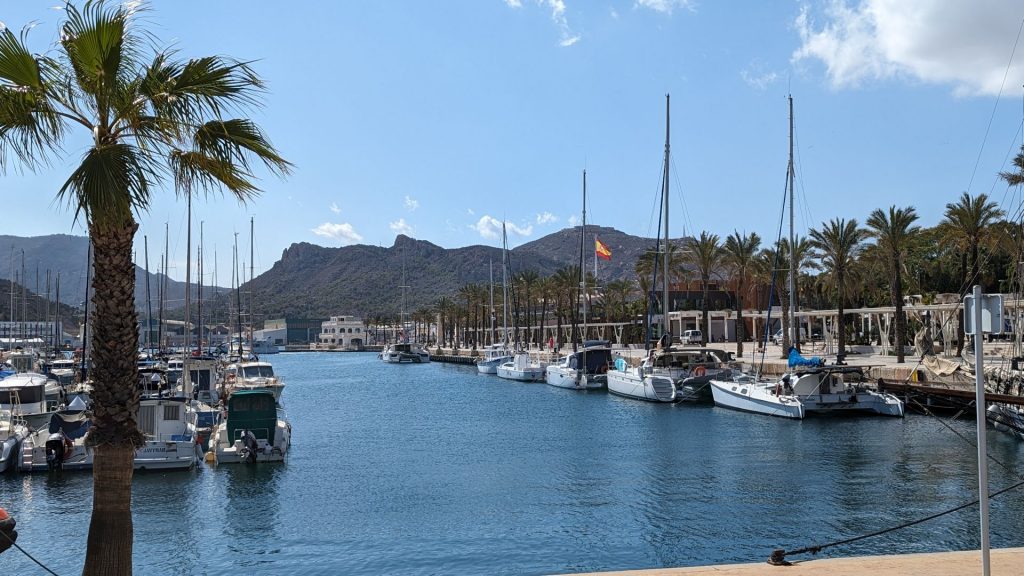
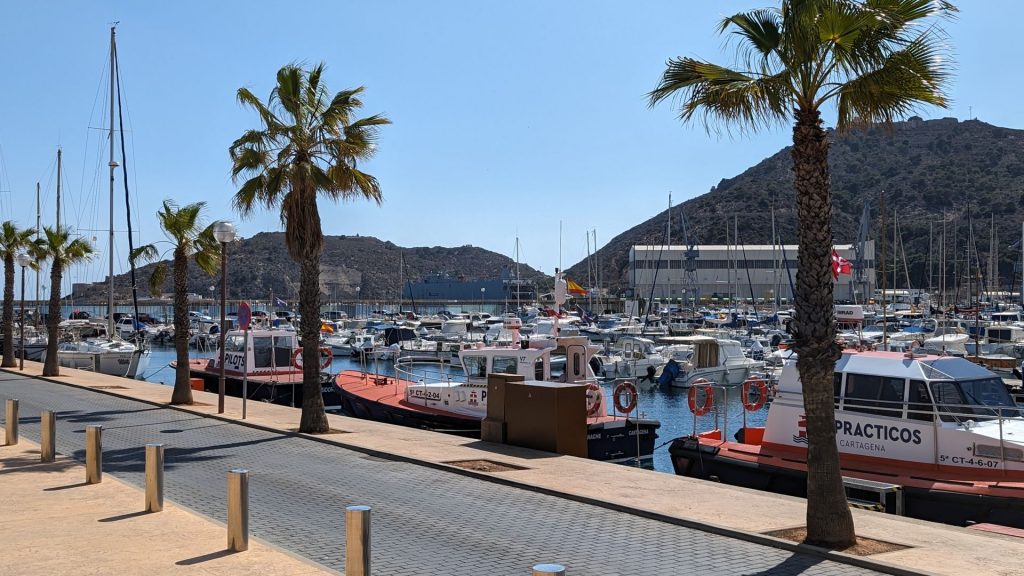
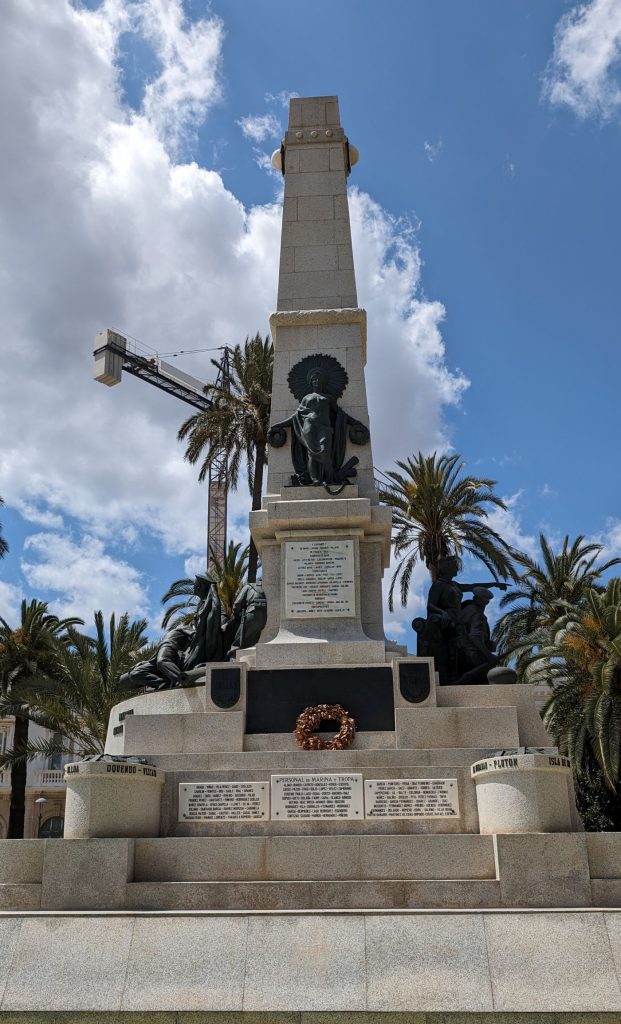
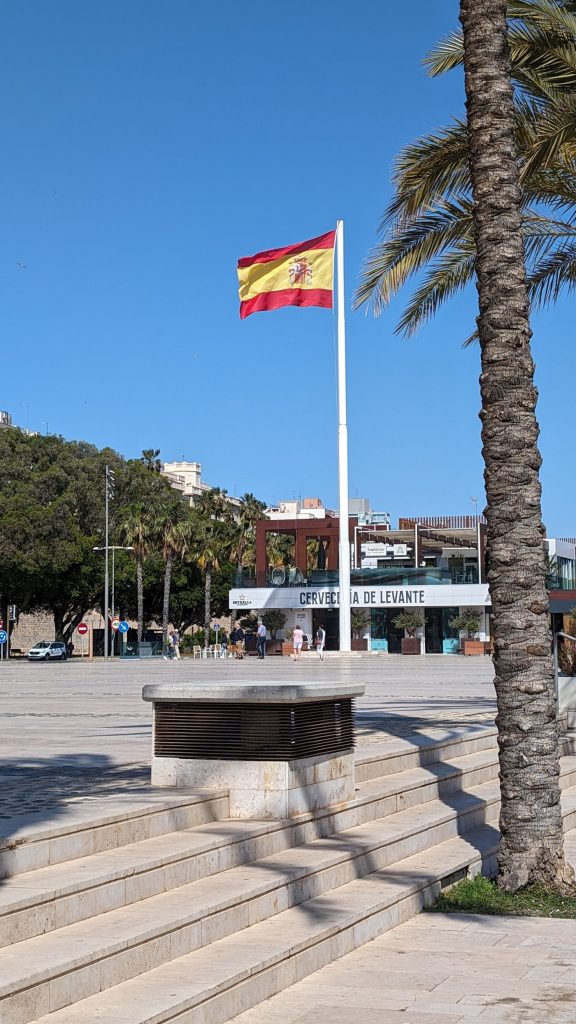
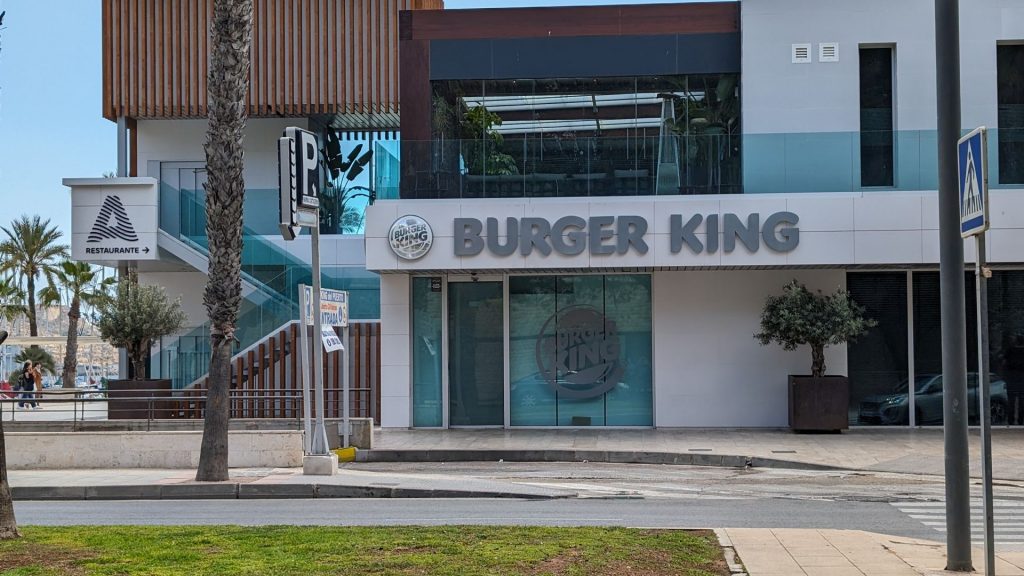
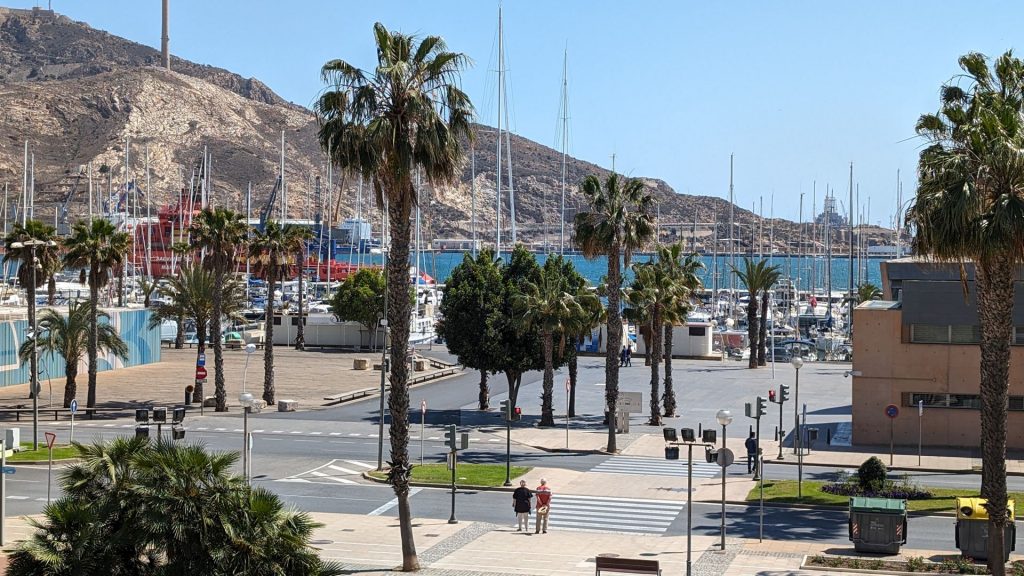
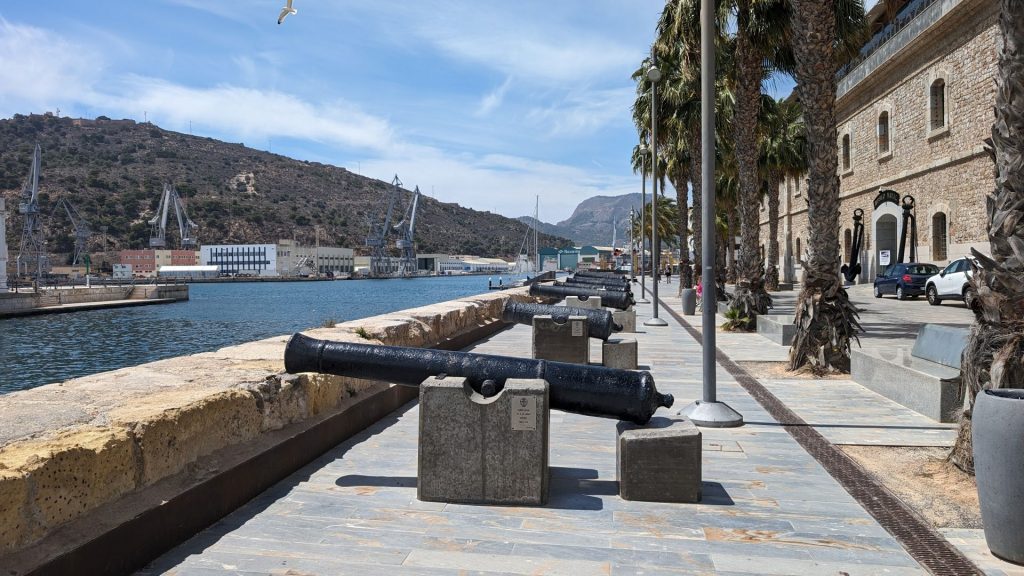
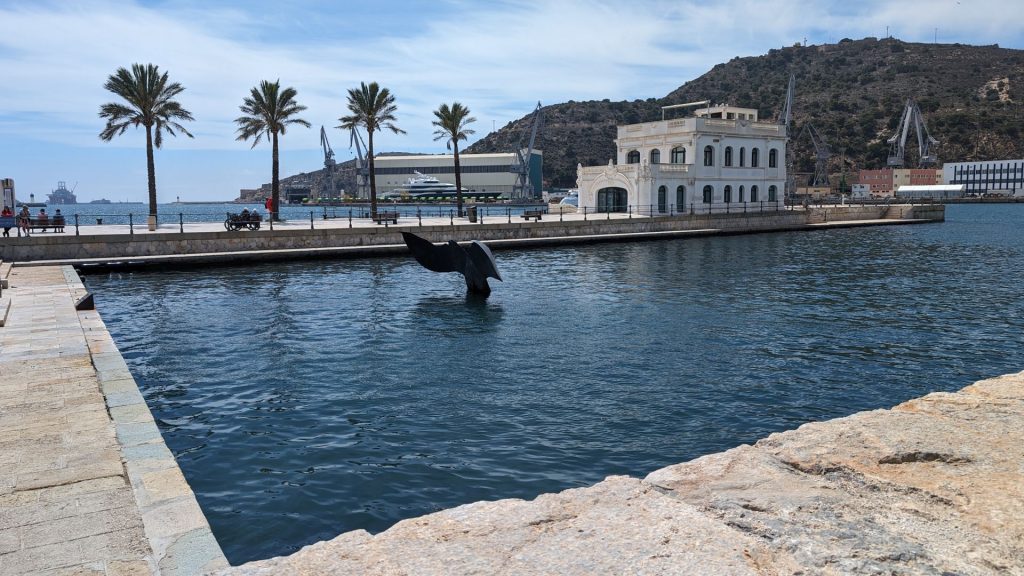
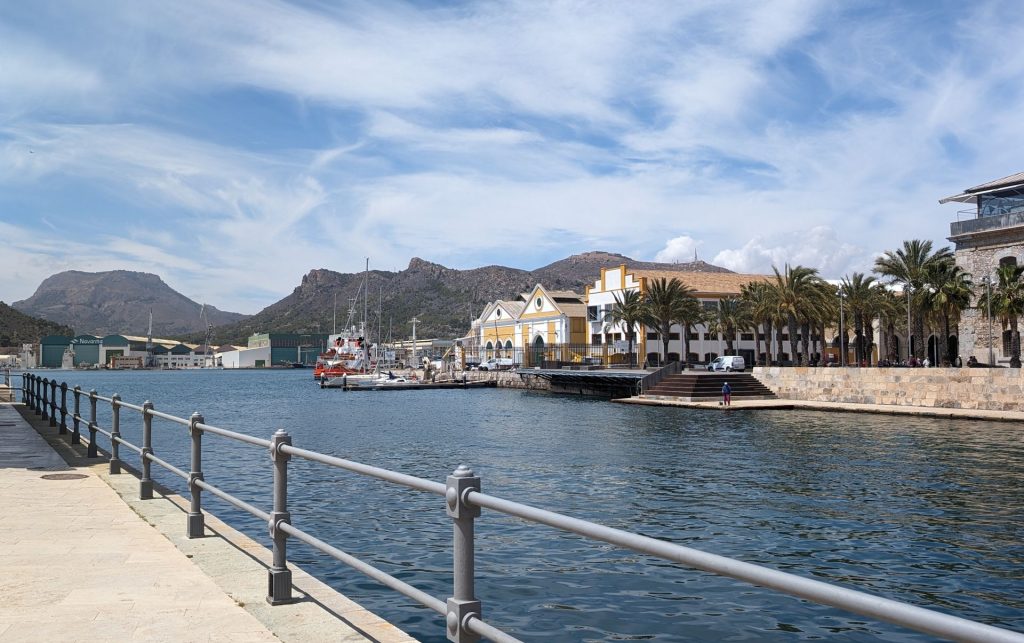

Arsenal. The Arsenal of Cartagena serves as a base for multiple units of the Navy and gives logistical support to Navy ships passing by Cartagena.
It was the largest industrial complex of the Mediterranean in the eighteenth century by the activity of its shipyards and subsidiary factories. The activities included to boat carpenters, riggers, sail makers, blacksmiths and craft work shoppers and fine artists to size of the ornamentation of the ships of the time.
During the second half of that century they were built in it, regardless of a large number of smaller vessels: 21 ships of the line, 17 frigates and over 50 brigs, jabeques (small, three-masted Mediterranean sailing ships with a long overhanging bow and stern), urcas (cargo ships), galleys, etc.. Thousands of people worked daily at the Arsenal in the construction and maintenance of the Spanish Navy units.
The Arsenal dock is a large rectangle of 550 meters long by 318 meters wide, oriented almost in the north-south direction.
You saw it from the castle and now you can see it from the ground.
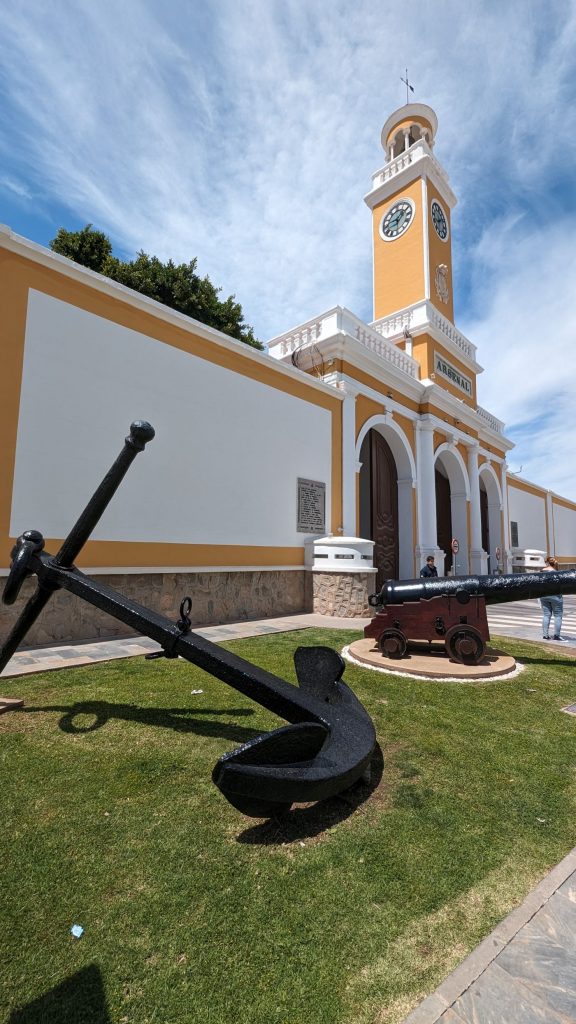
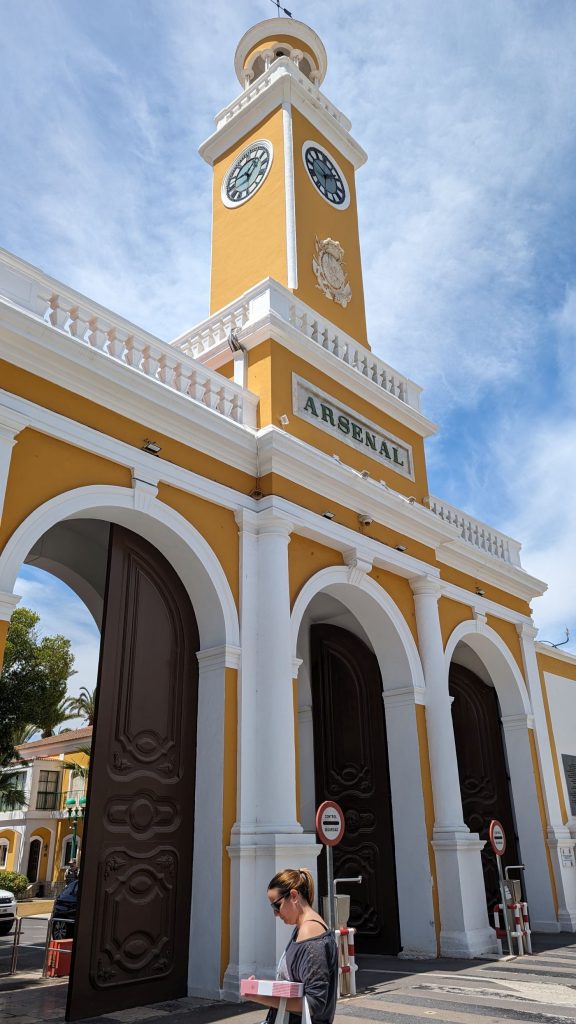
Sometimes the walk about town includes running errands. Most often it is to buy groceries, but sometimes it involves searching (often in vain) for boat parts, boat liquids, or parts needed to fix what’s broken on the boat. It makes my heart do a little flip flop when I see signs like these because it indicates the possibility of success:
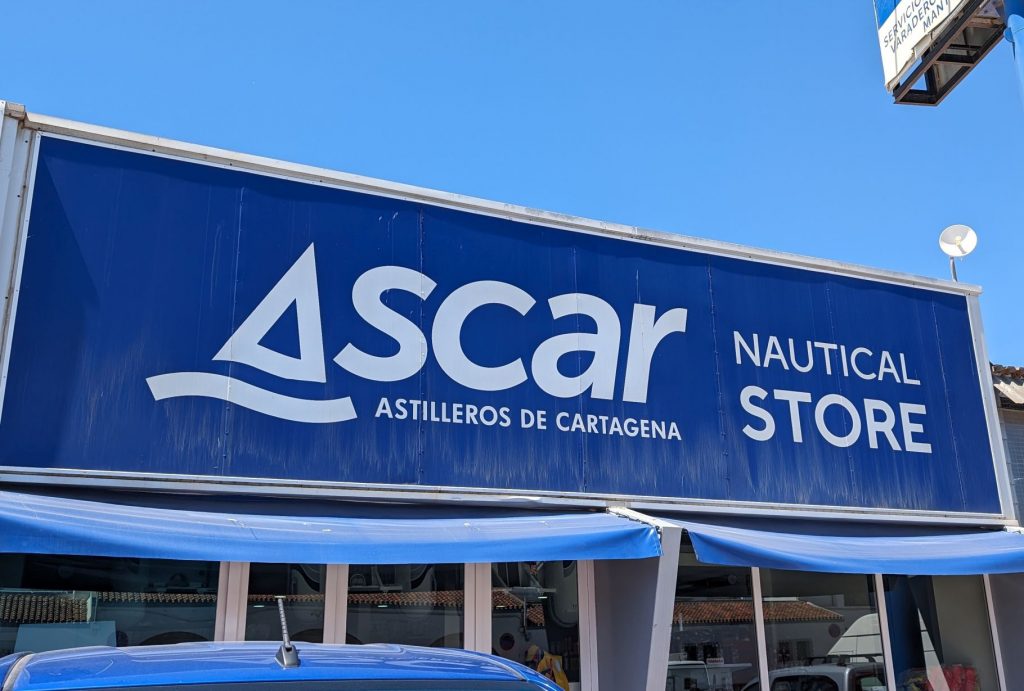
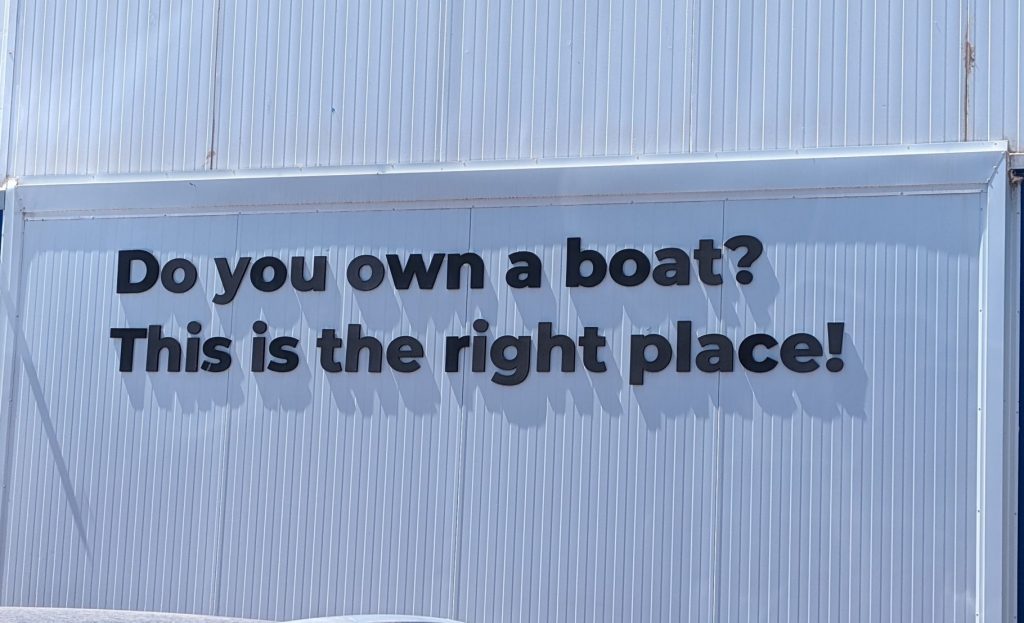
I sent Michael a super exciting picture from the store. Prepare yourself. You might want to sit down.
Tada!!
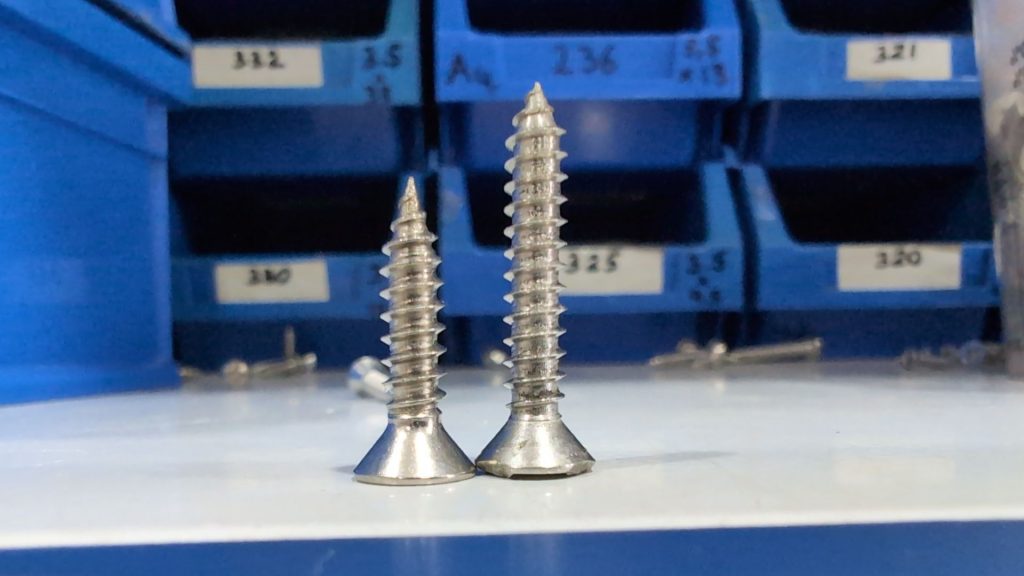
He wanted me to buy some screws. I carried a sample screw in my pocket and spent more time than one might think possible comparing it to the various screws in the store. I landed on this one (the shorter one). Michael actually wanted two sizes smaller than the sample screw. I found 10 of one size but only two of another. But we have more screws of various sizes now!
One of the many things I appreciate about Cartagena is that it is working to be more accessible to people with mobility issues. They’ve installed ramps outside and inside of structures, made sure there are plenty of curb cuts, and even installed an elevator to reach the castle. So you can reach the castle by the long winding route, circular staircase, or elevator. The latter two are combined in this structure:
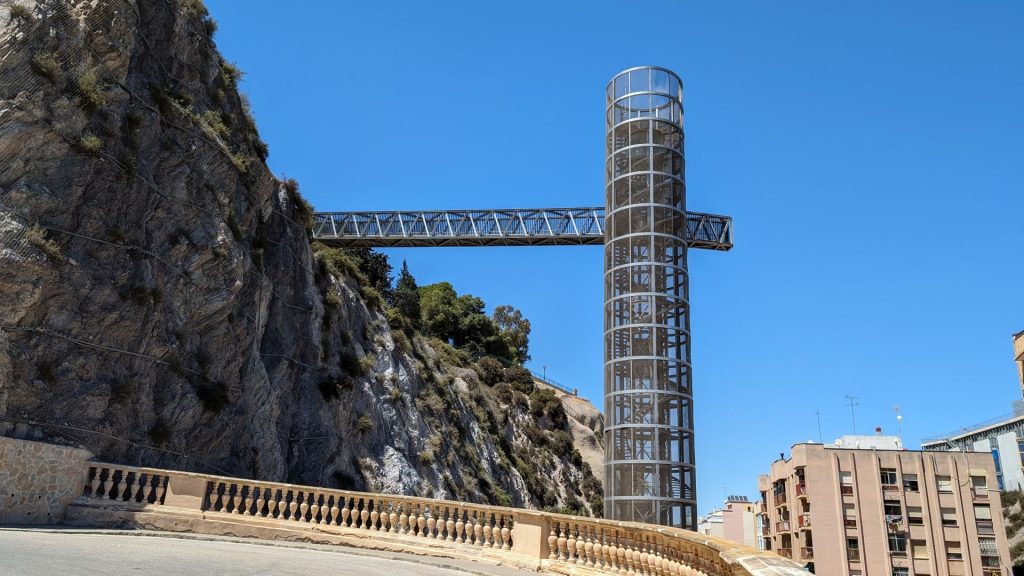
We hadn’t worked on a puzzle for quite some time so we were eager to work on one. We finished it in a couple of days. Mother Nature wasn’t having it, so we had plenty of time to assemble the puzzle.
BEFORE (April 26):
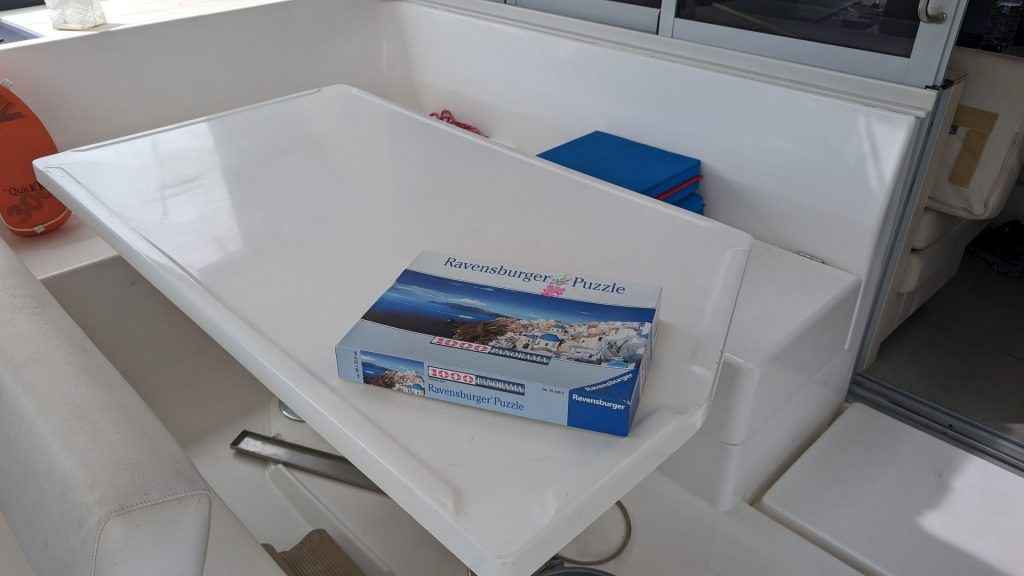
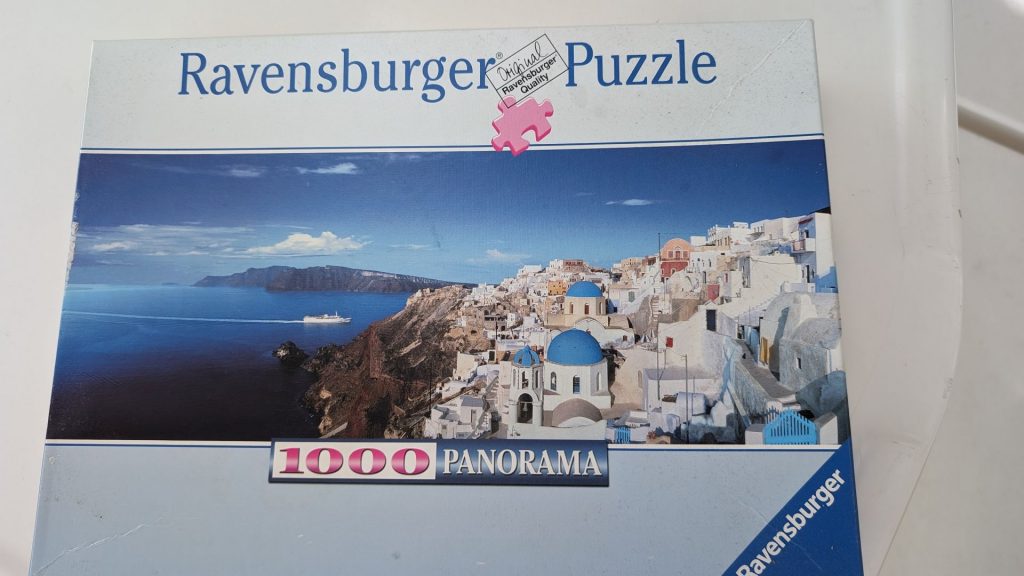
AFTER (April 28):
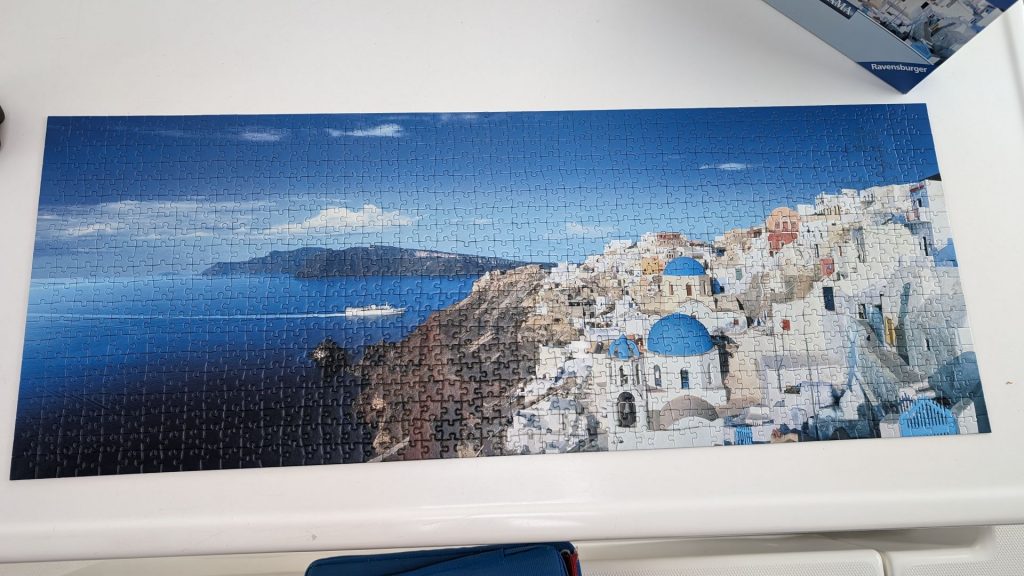
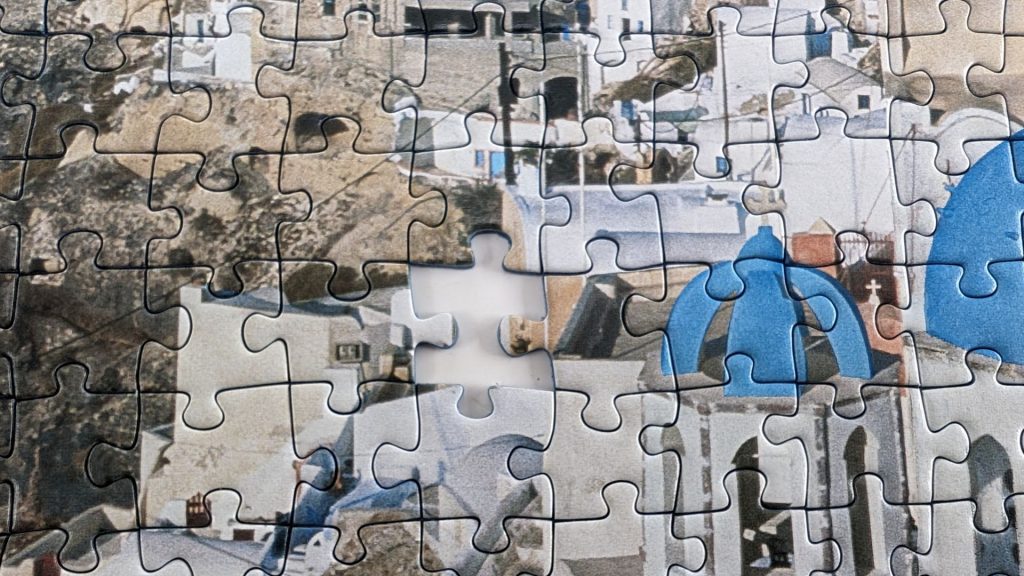
I made pork ribs for the first time in my life. They turned out well and I was happy that our oven held the temperature quite well. It’s not like your oven at home where you set the temperature. Oh no. You play around with the flame until the oven thermometer tells you what the temp is. Accompanied by homemade hashbrowns and steamed broccoli, it was a yummy meal!

A couple more pictures and that is it for today’s post!
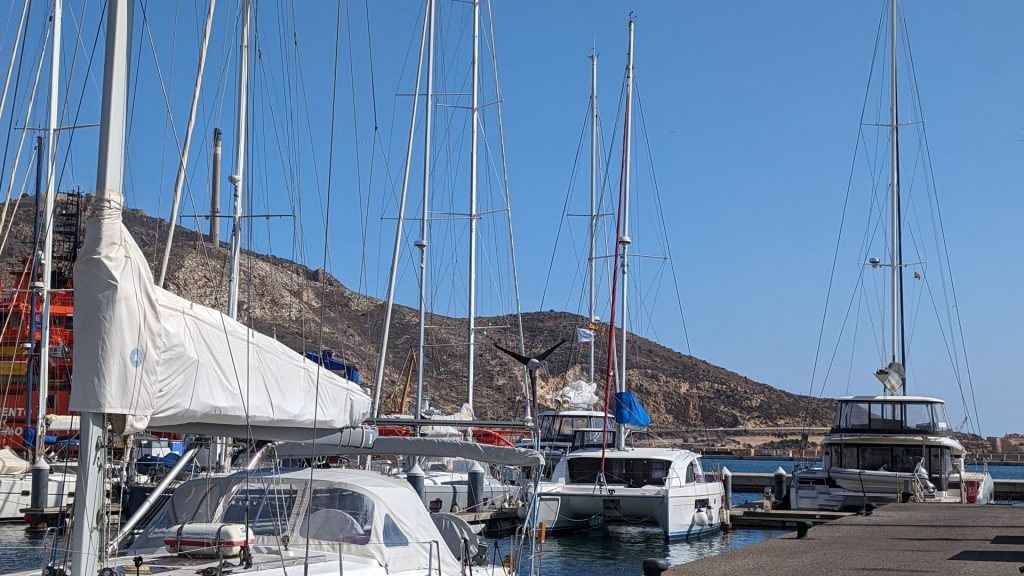
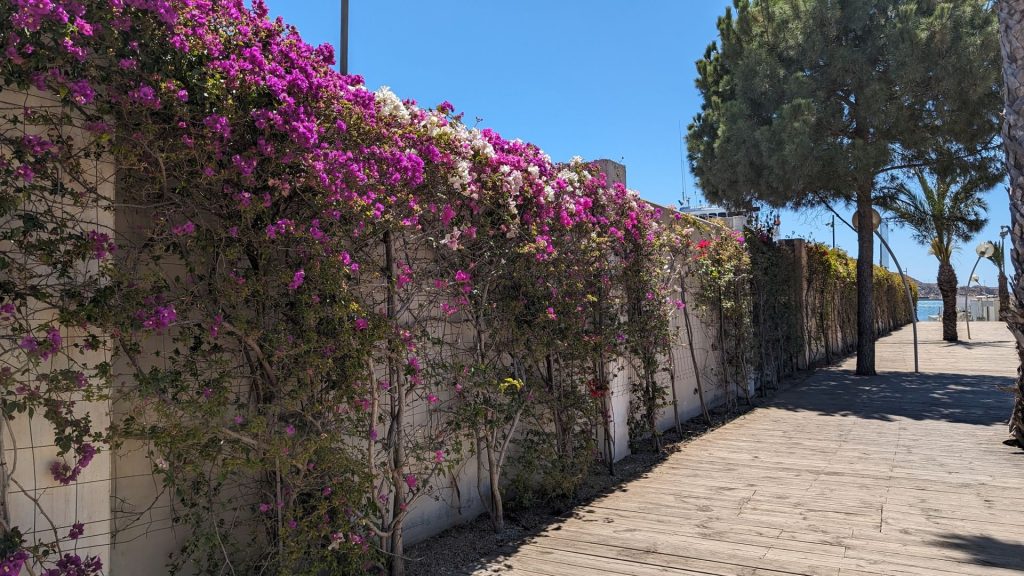
TTFN!
